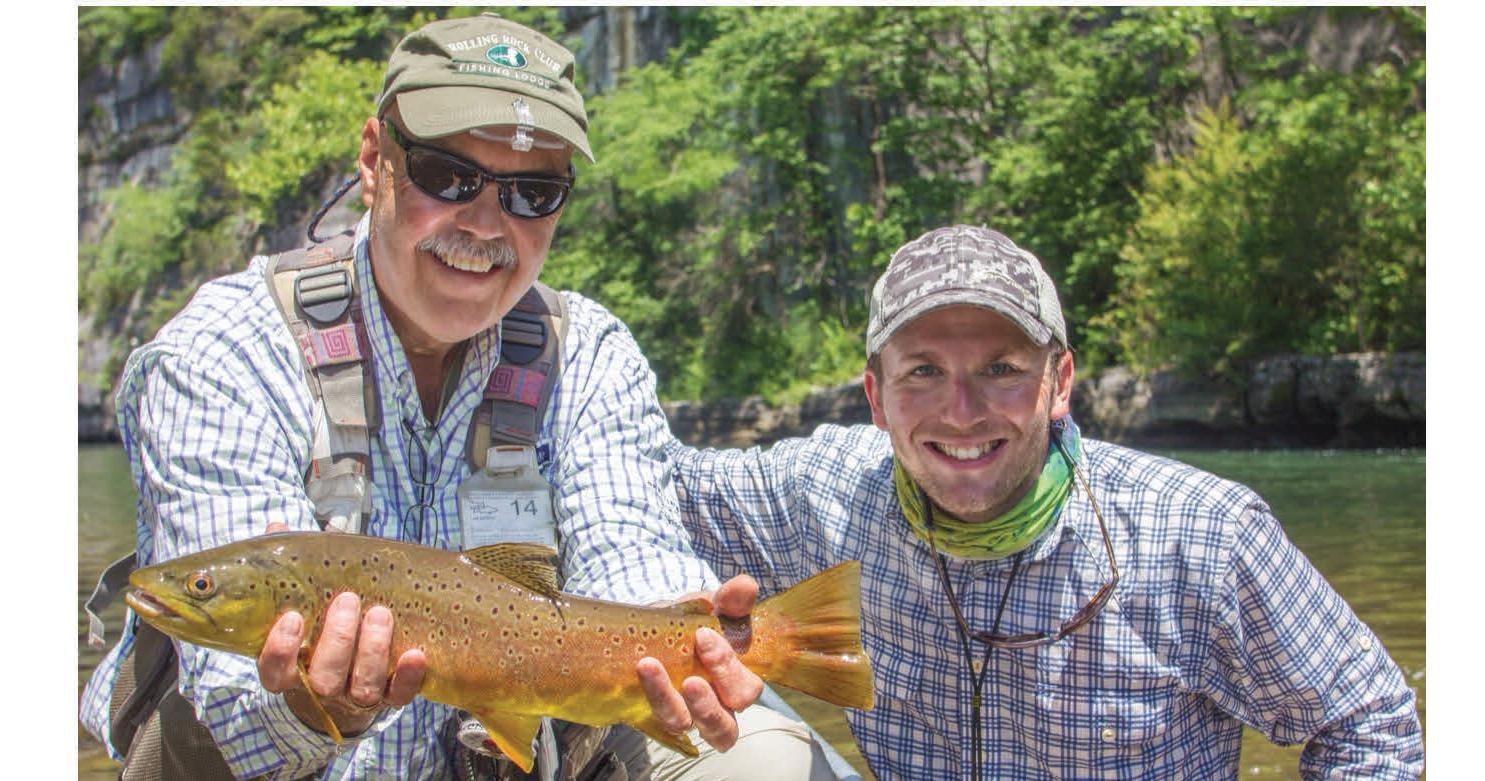




































































PUBLISH YOUR OWN FISHING MAGAZINE!
If you love the outdoors and dream of being in business for yourself, now is the time to choose a Coastal Angler or e Angler Magazine Franchise.

Established Brand • Proven Systems Training & Ongoing Support

Work From Home • Be Your Own Boss
• Alabama - SOLD
• Big Bend, FL
• Charlotte, NC
• Connecticut/Rhode Island
• Daytona Beach, FL - SOLD
• Destin/Pensacola, FL - SOLD
• Eastern Tennessee
• Georgia (Coastline, Savannah)
• Lake Erie, Ohio - SOLD
• Lake Michigan
• Long Island, NY
• Miami, FL - SOLD!
• New Hampshire
• New Jersey
• New Orleans, LA
• North Carolina (Raleigh, Wilmington)
• Okeechobee, FL - SOLD
• Outer Banks, VA
• Panama City, FL - SOLD!
• South Carolina (Hilton Head, Myrtle Beach)
• Tallahassee, FL/SW GA
• Texas (Coastal, Houston)
• ...YOUR HOMETOWN!
Don’t see your location? Ask one of our specialists about franchise availability in your area.
1-888-800-9794
info@coastalanglermagazine.com
franchise.coastalanglermag.com
Dear Angler,

We’re looking to expand our franchise footprint and are seeking like-minded outdoor enthusiasts who share in our vision to bring our free publication to every town in America! is is a great opportunity to own your own business, control your time and, to a great extent, control your income.
Our Ideal Franchise Candidate Will:
• Be an avid angler and/or love the outdoors.
• Have either prior business experience or a minimum of three years sales experience.
• Good communication skills
• Good credit
If you or someone you know is looking for an opportunity to own their own home-based business and earn a living in the outdoor industry, please contact us toll-free at 1.888.800.9794 or email info@coastalanglermagazine.com.
Tight lines, Ben Martin Editor In Chief Coastal Angler Magazine e Angler Magazine
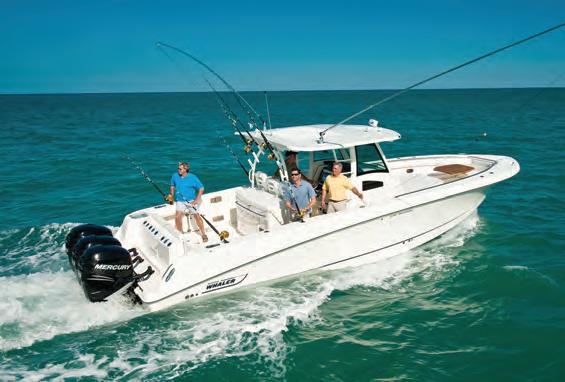

www.CoastalAnglerMag.com
FRANCHISOR-CORPORATE DIRECTORY
EDITOR IN CHIEF : Ben Martin • camads@coastalanglermagazine.com
COO : Tracy Patterson • tracy@coastalanglermagazine.com
ART DIRECTOR : Laura Kelly • graphics@coastalanglermagazine.com
EDITORIAL COORDINATOR : Nick Carter • editorial@coastalanglermagazine.com
WEBMASTER : Ryan Clapper • webmaster@coastalanglermagazine.com
ADVERTISING & FRANCHISE INQUIRIES: info@coastalanglermagazine.com • 888.800.9794
FRANCHISE DIRECTORY LINK
www.coastalanglermag.com/directory
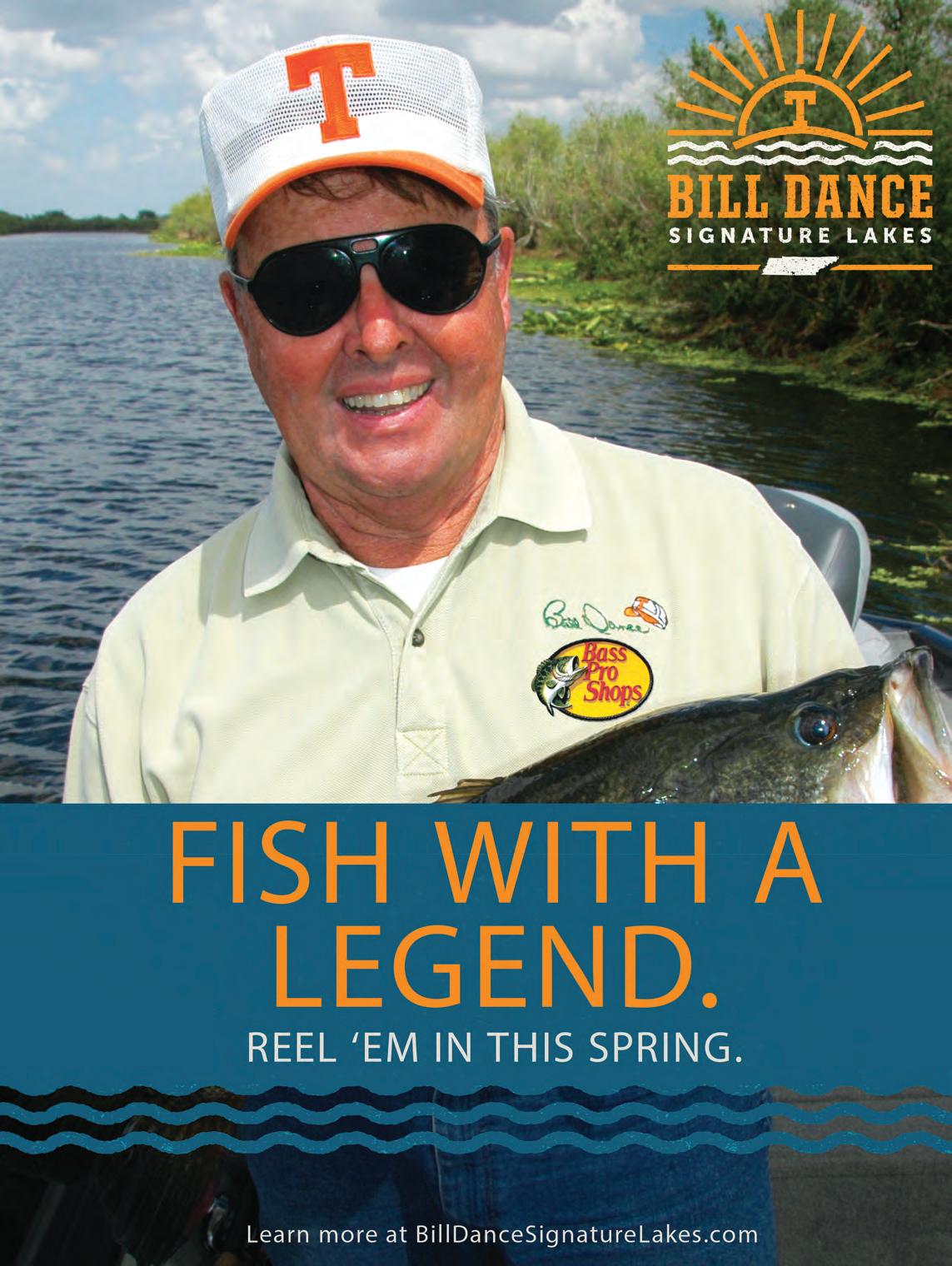


Sfrequent, and the pelagics are plentiful. is time of year, you can usually point your boat o shore and eventually run into the mecca. However, these sought-a er pelagic species are moving around through their migrations and nding them isn’t always guaranteed. Sometimes you just get unlucky running and gunning all day, on the hunt for birds, debris and weed lines. Whether you are out there with no signs of life or just can’t seem to get away from schools of undersized sh, it’s a good idea to have a backup plan to save the day and make the fuel bill worth it.
Having a deep-drop rig ready to go can save a day of o shore shing. Sword shing can be an epic day saver, but it takes quite a bit of time, gear and involvement to have a good chance. ere are a lot of opportunities for shing the bottom between the reef and the sword grounds.
With a set-up that can handle shing between 500 and 1,000 feet, you will have what you need to quickly pepper in some drops during your day, without spending too much time setting it up and packing it away. ere are a variety of edible aliens that can be targeted, or even snagged as bycatch, when shing in the deep, but pretty much all
onboard, in case you get hung on the bottom, or adjustments need to be made due to the current. Having the right weight is important, and it is pretty easy to tell a er a drop if you have put on too much or too little. I would recommend having 6-, 8- and 10-pound weights to make your adjustments with. ese leads can be extremely pricey, so look into some DIY methods if this is something you plan to get into.
Depending on what you want to target, there are a few variations you will want for your rigs. Utilizing 300-pound mono and sleeve swivels, space out up to ve hooks along the leader, making the drop-down leaders short enough that they won’t tangle with each other. Play around with di erent size hooks and spacing between them. If you aren’t sure what might be living on a newfound bottom spot, drop a rig with varied hook sizes, having the biggest on the bottom. It is also a good idea to a x a 6-inch, 50-pound breakaway leader to the lead to save the rest of your gear when you inevitably get hung up.

Searching for new bottom spots can be one of the most exciting parts about this type of shing. You might see ledges full of life on your machine, or you might see nothing at all, and still nd sh.
You can even look for changes in the waves on the surface that indicate depth uctuations on the bottom. Mark your spots whenever you get a bite, and start your own collection of o shore honey holes.
Sweet E’nuf Charters’ two-boat eet specializes in deep-dropping out of Marathon, Florida Keys. Call them at (504) 920-6342 to book your trip this summer. Follow Capt. Quinlyn on social media @captainquinlyn.




Thevery best hunting knives possess a perfect balance of form and function. They’re carefully constructed from fine materials, but also have that little something extra to connect the owner with nature. If you’re on the hunt for a knife that combines impeccable craftsmanship with a sense of wonder, the $79 Huntsman Blade is the trophy you’re looking for.
The blade is full tang, meaning it doesn’t stop at the handle but extends to the length of the grip for the ultimate in strength. The blade is made from 420 surgical steel, famed for its sharpness and its resistance to corrosion.
The handle is made from genuine natural bone, and features decorative wood spacers and a hand-carved motif of two overlapping feathers— a reminder for you to respect and connect with the natural world.
This fusion of substance and style can garner a high price tag out in the marketplace. In fact, we found full tang, stainless steel blades with bone handles in excess of $2,000. Well, that won’t cut it around here. We have mastered the hunt for the best deal, and in turn pass the spoils on to our customers.
But we don’t stop there. While supplies last, we’ll include a pair of $99 8x21 power compact binoculars and a genuine leather sheath FREE when you purchase the Huntsman Blade
Your satisfaction is 100% guaranteed. Feel the knife in your hands, wear it on your hip, inspect the impeccable craftsmanship. If you don’t feel like we cut you a fair deal, send it back within 30 days for a complete refund of the item price.
Limited Reserves. A deal like this won’t last long. We have only 1120 Huntsman Blades for this ad only. Don’t let this beauty slip through your fingers. Call today!
Huntsman Blade $249*

Offer Code Price Only $79 + S&P Save $170
1-800-333-2045
Your Insider Offer Code: HBK186-01
You must use the insider offer code to get our special price.
Stauer ®
Stauer® 8x21 Compact Binoculars

-a $99 valuewith purchase of Huntsman Blade
What Stauer Clients Are Saying About Our Knives


“This knife is beautiful!”
— J., La Crescent, MN
“The feel of this knife is unbelievable...this is an incredibly fine instrument.”
— H., Arvada, CO
Rating of A+
14101 Southcross Drive W., Ste 155, Dept. HBK186-01 Burnsville, Minnesota 55337 www.stauer.com
*Discount is only for customers who use the offer code versus the listed original Stauer.com price.
California residents please call 1-800-333-2045 regarding Proposition 65 regulations before purchasing this product.
•12” overall length; 6 ¹⁄2” stainless steel full tang blade
• Genuine bone handle with brass hand guard & bolsters
• Includes genuine leather sheath

For many anglers, yellow n tuna settle right into the sweet-spot of the tuna shing world. ey’re bigger and stronger than black ns, while being far more approachable than giant blue ns. ey’re fast and strong, and they school up, sometimes crashing baits on the surface. ere’s so much to like about this tremendous game sh, and it doesn’t hurt that limits are relatively liberal in most places. Did we mention that yellow ns are made of the delicious meat known as ahi in sushi bars?

Here are three of the best destinations where you can test your strength against a few yellow ns. Win the battle, and you’ll eat like a king.
One of the most consistent places in the world for catching yellow ns is out of Venice, e “Yellow n Capital of the World.” Tuna are a year-round possibility here in the Northern Gulf, where the Mississippi River produces rich currents and rip lines that roll out to hundreds of oil rigs and undersea mounts known as lumps.
Summertime brings better weather and calmer seas, when getting o shore more quickly and comfortably can reward anglers with mixed bags of mahi, wahoo, snapper and tuna in the 40 to 80-pound range. However, peak season for giant yellow ns is in winter, and triple-digit sh become the norm when the bite is hot. Fish heavier than 200 pounds are a de nite possibility.


On Mexico’s Paci c Coast, where the landmass begins to curve east, Puerto Vallarta is positioned within range of some of the most proli c tuna grounds in the world. Outside of Banderas Bay, a series of islands and deep-sea banks draw in tuna like clockwork at certain times of year. ese are some of
By CAM Stayellow ns here, but shing is best from July through October, with a typical peak season of August and September. With runs of 36 to 125 miles to reach the shing grounds, anglers must commit to long days on the water or overnight trips. e rewards can be huge. A low-end average sh weighs 80 pounds out of Puerto Vallarta. Big ones weigh 350 pounds or more.
e Outer Banks get a lot of attention for giant blue n tuna that move through in the winter months, but yellow n tuna are around all year. With the Gulf Stream averaging 30 to 45 miles o shore and all the bottom structure on the Continental Shelf, large schools of yellow ns are frequently encountered along with many other pelagic favorites.
Unpredictable weather makes the deep winter months of January and February a crapshoot, which leaves October through December and March through June as prime time for catching yellow ns. ey run a little smaller here, with 25- to 65-pound sh being normal catches, but the action is usually fast once you nd them. Charters ll limits quickly, with doubles and triples coming tight when you troll through a school of them.
For more great destination shing, visit coastalanglermag.com.


Performance Bulletin Available
59 YEARS OF REPOWER EXPERIENCE!
Mastry Engine Center has received the Suzuki Marine Super Service Award and has been ranked #1 in Suzuki Marine US Sales!
Repower packages designed to best fit your needs and not stretch your budget. Financing available.





All Suzuki repowers come with the new Suzuki 5-year factory warranty.
Many of our Suzuki RePower Centers feature Water Accessible Drop Travel Lifts.

Suzuki RePower Centers are stationed around the southeast to help with your Suzuki service and repower needs.

There’s a wide variety of snapper species in the Florida Keys, including mangrove snappers, yellowtails and cuberas. However, the mutton snapper is a distinct and noteworthy member of this group. ey are a ton of fun to catch, delicious to eat, and they become easier to target in summer.



During the summer months, typically from May to September, mutton snappers spawn in large numbers, gathering in groups around reefs and wrecks to reproduce. Since these spawning aggregations are typically found in deeper waters, this makes conditions for ghting them more challenging and more fun. ese sh are renowned for their impressive power, strength and agility, so successfully reeling them up from deeper water requires good angling skills. Muttons make strong runs and sudden dives, so it’s important to have 20- to 30-pound test and a little heavier gear than you’d need for smaller mango or yellowtail snapper.
Landing a big deep-water mutton is a rewarding and exciting experience.
I caught my personal best mutton while shing with Capt. Brandon Storin, aka Capt. Bean. It was a 16.2-pounder on light tackle, and it was such a fun and challenging ght. Muttons will de nitely test your endurance. Even with heavier tackle, they will give you a ght to remember!
In fall and winter, muttons can also be caught in shallow waters, and this is also exceptionally fun. When conditions are right, a good inshore/backcountry guide can put you on a few of these skinny-water brawlers, along with the other species found in the backwaters of the Keys.
Mutton snapper make excellent table fare, but it’s important to remember that you should only keep what you plan to eat out of respect for the shery, especially when they aggregate to spawn. A fully grown mutton snapper could feed ve or six people, so keep that in mind when you’ve got a boat load of people throwing sh in the box.
If you want to experience and immerse yourself in the Mutton shery here in the Florida Keys, I recommend booking an o shore charter with Bud N’ Marys Marina.
Check out Capt. Bean’s inshore charters, visit










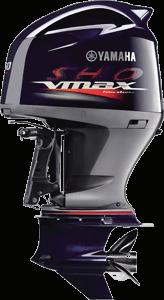









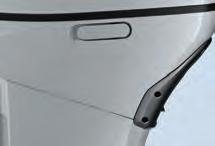












Trade-in your dirty, uncivilized, oil-burner for an environmentally responsible, clean, quiet, efficient Suzuki 4-stroke!


For a limited time, when you purchase a new Suzuki outboard from an authorized Mastry RePower Center you will receive a Special Trade Allowance for your dirty and outdated 2-stroke outboard. This is Mastry’ s commitment to help keep our waterways clean as well as making it easier for you to improve your boating experience with an up-to-date quiet, efficient 4-stroke outboard. Contact your closest Mastry RePower Center for the details of this Exclusive Mastry RePower Center Offer.



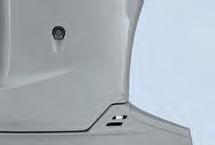
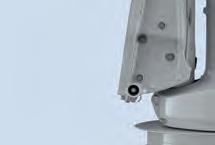
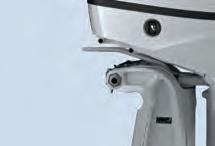






ICAST 2023, the planet’s largest sport shing trade show, will invade Orlando July 11-14, lling the giant exhibit halls of the Orange County Convention Center with more than 600 companies showcasing all the latest and greatest in shing from all over the world.

Produced by the American Sport shing Association (ASA), the 66th annual ICAST promises to be bigger and better than ever. It is the epicenter of the sport shing world, where each year the trends in shing tackle, apparel and accessories are launched and countless valuable business connections are made.
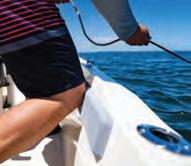
“ICAST is the cornerstone of the global sport shing industry,” said ASA President Glenn Hughes. “ICAST is where connections are made that create business opportunities for our industry. It’s also where most new products make their debut into the shing marketplace.”

Each year, this is the one can’t-miss event of the season for everyone in the outdoors industry. From shing guides to retailers, media and exhibitors of shing-related products and services, it’s a one stop shop, where your business might nd its next big money-maker.
Coastal Angler and e Angler will be at ICAST in force. Look for our logo-emblazoned team members perusing the aisles in search of

the next big thing. Stop and ask us about special ICAST free giveaways and deals on advertising.
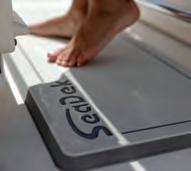
If you’ve got a message to share, we’ve got the vehicles to spread your story to hundreds of thousands of shing enthusiasts.
At its heart, ICAST is about the New Product Showcase, where the coming year’s hottest new


gear is debuted for the industry. From a eld of hundreds of new tools, tackle, lures, electronics, apparel and more, the following pages contain some of our favorite industry innovators right now.
For more information, go to www.icast shing.org.
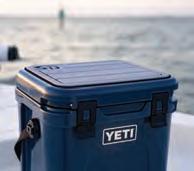
Okuma Sarasota Rods are the epitome of strength and versatility. Built with a 24-ton or E-glass blank, they feature Okuma’s UFR-II: Ultimate Flex Reinforcement rod tip technology for the ultimate in lifting power and durability. Elevate your experience with eight spinning, casting, and trolling models designed to exceed your expectations on the water.


| okumafshingusa.com







































































































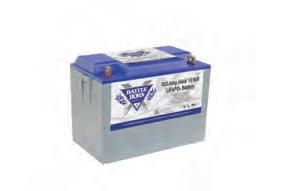












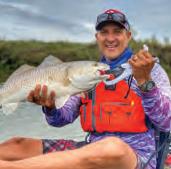




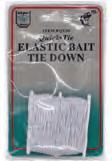

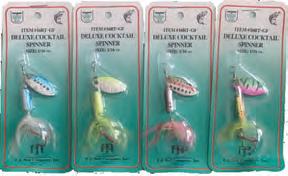
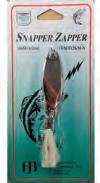
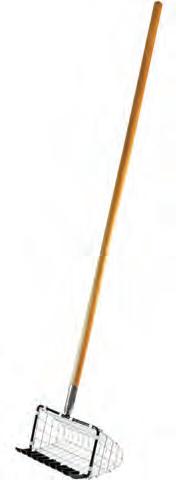

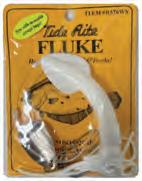
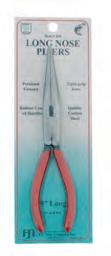

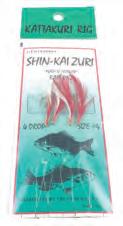



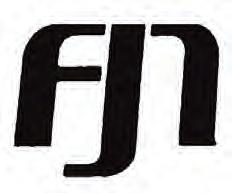
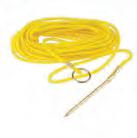


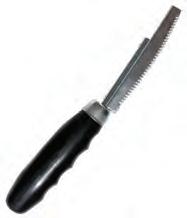



ICAST SPECIAL DISCOUNT

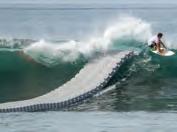

Lasting 2-3 times longer than wooden, concrete, and aluminum docks, our modular foating system is the preferred dock choice for residential, commercial, marina, liesure, and other applications. Customizable and confgurable for boat docks, liesure and recreation docks, and drive-on jet ski and personal watercraft!
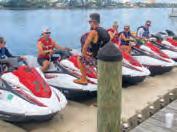
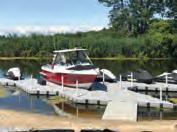
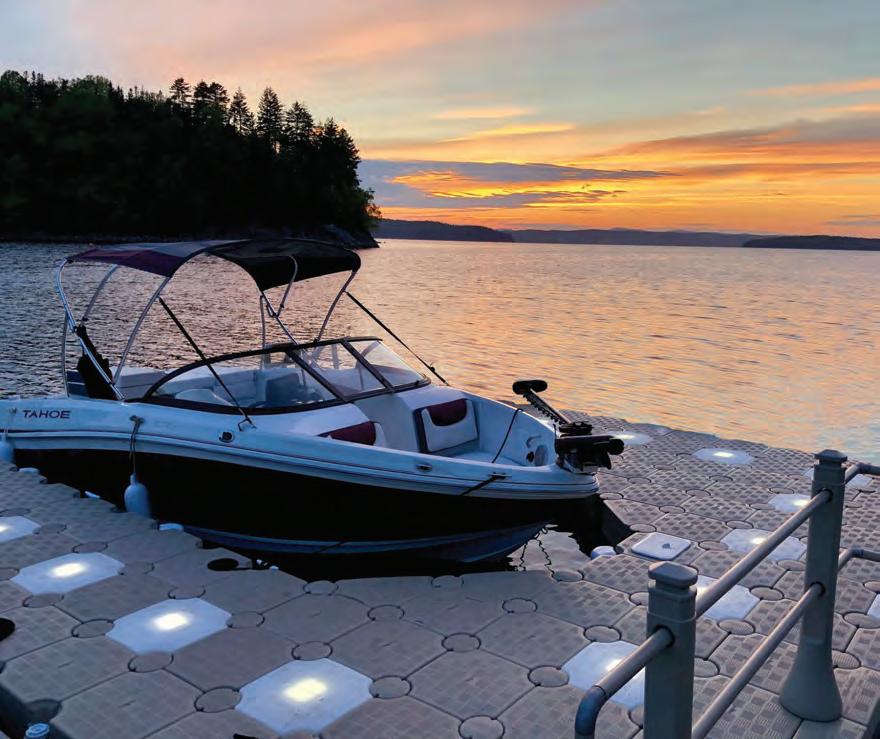
•High-quality plastic
•Environmentally-friendly
•Guaranteed for 20 years
•Near-zero maintenance
•Completely customizable
•UV and pollution resistant
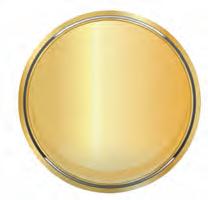
www.candockcf.com


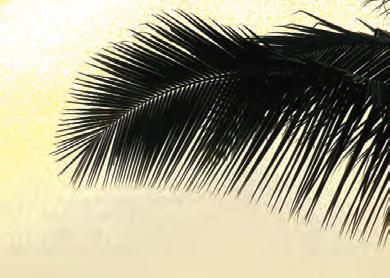


In the tale of King Solomon, two women were battling over which was the rightful mother of a baby. Solomon, in his infinite wisdom and with the impartial fairness of a judge, offered to split the baby down the middle, giving each woman half.
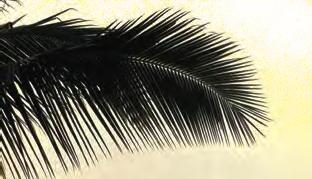
Realizing how silly this was, one woman quickly gave up her claim, not wanting the baby to be harmed. She would rather the baby go to the other woman than see it hurt in any way.
Seeing this, Solomon rewarded her with the baby, recognizing she was the woman who truly had motherly instincts.
A similar occurrence happened June 8 in Stuart. The U.S. Coast Guard announced a temporary schedule deviation to the railroad drawbridge over the St. Lucie River. It basically split the time open with

the time closed at 30 minutes each.
Here are the highlights of what the USCG published June 8 in the Federal Register:
- Bridge will open at 15 minutes and 45 minutes after the hour. Boats will be allowed to clear, but bridge will start closing after 15 minutes.
- Railroad bridge owner must provide a bridge tender, a mobile app and a logbook
- Once trains pass, the bridge must go back to open position
The boating community could not be described as happy, but they accepted the compromise.
“While the best-case scenario would be no trains and no closures, the test deviation is better than what I’ve come to expect from the Coast Guard and Brightline. I’ve said from the outset that the bare minimum our community should accept is 50/50 - equal time for boats and trains - and this proposal meets that requirement,” Mast said in a
statement to CAM.
The train companies, however, are less than happy. Reportedly, FEC Railway, the freight carrier, and Brightline, the passenger carrier, had requested the bridge be down for 45 minutes every hour. The companies project 32 passenger trains and 15 freight trains a day. Mast had calculated that would amount to 9-10 hours per day of the bridge being down, restricting boat traffic.
A train company spokesperson said the train companies will not comply with the USCG request. The spokesperson also said the train companies will not be providing a bridge tender before the passenger train service begins in September.
“The temporary deviation issued by the Coast Guard was done unilaterally and without authority or regard for due process. As written, it is deeply flawed and will result in dramatic impacts to local traffic, create safety issues for the
public, and is impossible for freight and passenger railroad operations to comply. We will continue to pursue reasonable and equitable resolutions to the issue of bridge operations and simultaneously continue to encourage progress toward the ultimate solution which is the development of a new bridge and a Treasure Coast Brightline station,” read a joint statement from Brightline and FEC Railway sent Thursday to CAM.
Plaintiffs in a lawsuit filed in May against the USCG, Army Corps of Engineers and FEC Railway were relieved to see the bridge schedule, which is not ideal, but workable, for their purposes.
The U.S. Coast Guard Seventh District in Miami seeks public comment on or before August 4, 2023 at the Federal Decision Making Portal at https://www.regulations.gov.
July
July
July
July
July
July 21 FAIR Evening
July 22 FAIR Evening
July 23 POOR Evening
July 24 POOR Evening
July 25 GOOD Morning
July 26 GOOD Morning
July 27 POOR Morning
July 28 POOR Morning
July 29 GOOD Morning
July 30 GOOD Morning
July 31 BEST Morning
July 12
July 14
July 15
July 16
July 17
Morning
July 18 POOR Evening
July 19 POOR Evening
July 20 FAIR Evening
What do the ratings mean?
POOR day basically means the fish will either steal all your bait or will not even touch your line.
FAIR day means that you catch one or two fish but you will have to work hard to do so.
GOOD day means that you will catch enough fish to feel gratified.
BEST day means that you will catch something almost every time you cast your line in the water.
SOURCE: The Old Farmers’ 2023 Almanac
The 2023 spiny lobster season opens with the two-day recreational mini-season on July 26 and 27, followed by the regular commercial and recreational lobster season, which starts Aug. 6 and runs through March 31, 2023.
“Spiny lobster season is an exciting time for anglers of all ages to be on the water,” said Florida Fish and Wildlife Conservation Commission (FWC) Commissioner Robert Spottswood. “It’s also a great time to practice safe boating and take care around Florida’s coral reefs.”

Learn more about bag limits, size limits, where to harvest and other regulations at MyFWC.com/Marine by clicking on “Recreational Regulations” and “Lobster,” under the “Crabs, Lobster and other Shellfish” tab. If you plan to lobster in the Keys, another great resource is the Monroe County Tourist Development Council website KeysLobsterSeason.com.
Don’t forget to get your license and spiny lobster permit at GoOutdoorsFlorida.com.

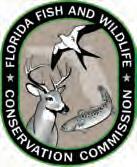
Looking to keep up to date on Florida’s saltwater fishing regulations? Find them on the Fish Rules app. Learn more at FishRulesApp.com or follow Fish Rules at Instagram.com/FishRulesApp or Facebook.com/FishRulesApp.

If bully netting this season, please keep lights directed toward the water and avoid shining them at houses or people along the shoreline. Please be
a $28 value!) Use discount code: TCT.
considerate of others by keeping sound levels low when near shoreline residences.
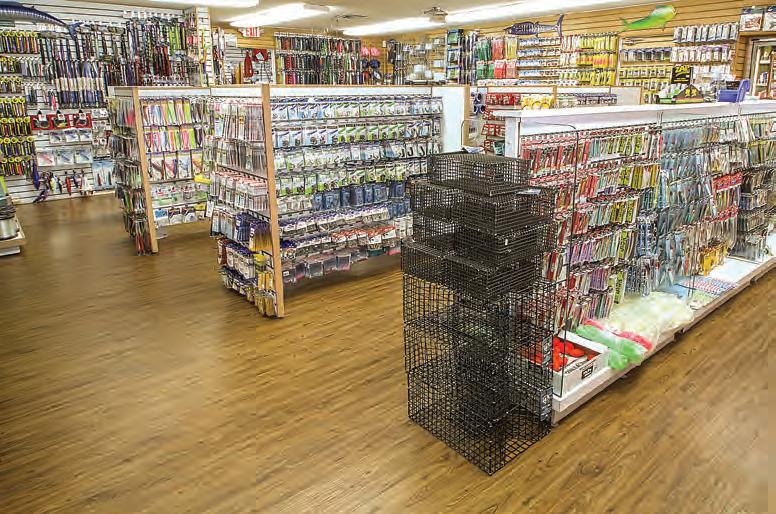

Don’t forget to use care around corals and other marine life. FWC launched the Florida Coral Crew to engage sportsmen and women in the effort to combat Stony Coral Tissue Loss Disease. Before you go out looking for lobster, you can sign up to join the crew at FLCoralCrew. com.

Be safe when diving for lobster. Wear a life jacket when underway and do not drink and boat. When lobstering in open water, divers should stay within 300 feet of a properly displayed divers-down flag or device and within 100 feet of a properly displayed divers-down flag or device if near an inlet or navigation channel. Boat operators traveling within 300 feet of a diversdown flag or device in open water or
within 100 feet of one on an inlet or navigational channel must slow to idle speed.
For more information, visit MyFWC.com/Boating/Regulations and click on “Divers-down Warning Devices.”

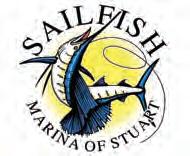


More on how to measure lobsters can be found at: myfwc.com/fishing/ saltwater/recreational/lobster/.


a female without eggs. The little swimmeretts cover the area where there would be eggs if she had any. If you see red roe, throw the lobster back so there will be MORE lobsters.
Capt. Scott Fawcett
Off the Chain Fishing Charters (772) 285-1055

offthechainfishing.com
fishscottyf@bellsouth.net
July’s highlights don’t stop after the Fourth, they’re just getting going. Light winds, calm seas, good bait, and hungry fish keep the excitement going this month. Twenty years ago, these summer months didn’t produce like they have been lately. Doubledigit sailfish days are becoming more and more regular the last few years and there are even a few summertime sail tournaments now to compete in if you desire. These summertime sails are not only big and mean, but they swim in pairs and even gangs, so expect multiples and be ready to pitch to followers when you get your fish close. The standard 50-pound leader and 6/0 and 7/0 hooks work great when paired with 20-pound mainline and a nice 6–7-foot Blackfin Rod.
Dolphin fishing, although it’s been slow the last few years, should continue to provide a few fish here and there and if the sargassum weed doesn’t take over the Atlantic this month it should only help our fishing as it slides up the coast. Thank God it’s not as bad as they were predicting. With the large bait schools in front of the inlet and along the beach, keep an eye out for schools of tarpon, big kings skyrocketing and even sailfish and cobia in shallow and along the beach.
This is the time of year when it really pays to have a good pair of polarized sunglasses. We use Costa Del Mar’s with 580 lens to help us see the fish through the glare the July sun casts on the water. Try the Blackfin Rods Carbon E series spinning rods when casting live bait or artificials to these fish for increased distance, super sensitive feel and great lifting power.
These hot, light wind days in July will have you begging for a little breeze. It doesn’t take much to get a Tigress “light wind” kite in the air so that’s what you’ve been seeing

behind our boats. We’ve been using Tigress for a couple years now and on the days when you think there’s not enough wind to get them up, they still fly and we’re still able to steer them well to maximize our coverage and get our baits in the strike zone. On the slicked-out days I recommend taking a little ride. Run and gun looking for sails on top or weed patches for mahi on your way to and from the swordfish or tuna grounds.
This is a great time of year to do those long-range trips or even head to the Bahamas. We really enjoy Blue Marlin Cove in West End; it’s close, clean, friendly, safe and the fishing is super. They can also cook your catch

for you and it’s out of this world! Blue Marlin Cove has everything you need so you don’t have to pack a bunch of stuff for a short trip. Pots, pans and silverware in the rooms to dock lines and hoses on the dock. Staying there makes a trip to the Bahamas easier than taking the boat to the sandbar for lunch.
Whatever you decide to do this July, I hope your fishing days are “Off The Chain” and externally memorable. Have a safe, great summer and please call me to book your next adventure.
Chaos Fishing Charters
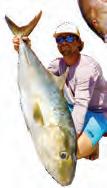

(772) 341 – 2274
www.chaosfishigcharters.com
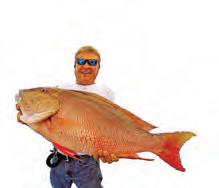

jon@chaosfishigncharters.com
July is prime time for large snook and tarpon on the Treasure Coast. Early morning fishing will yield the best results with both live bait and/ or artificial. Top water plugs work amazing at first light for snook, tarpon, and jack crevalle. Live bait fishing near inlets and passes will produce great snook and tarpon action. Live whitebaits, mullet, or crabs are all great choices this month

Capt. Rocky Carbia
Safari I Deep Sea Fishing
Pirates Cove Resort and Marina
4307 SE Bayview St. Port Salerno
Reservations: (772) 334-4411
Safari-1.com
Theanglers of July will wake up early with their game faces on, to take on their scaly opponents upon the summer playing field of the near coastal waters, offshore of Martin County.
The ocean’s all-star roster of fish adversaries will include bottom species like snapper, grouper and amberjack, along with summertime surface pelagics like mahi, king mackerel, and sailfish, just to name a few. Cobia will also be found throughout the water column this month and are likely to be seen swimming along with large sharks, rays and turtles near the surface. Live baits, as well as four-ounce. green/ chartreuse lead head jigs will work best for sight casting to a “trailing” cobia.
Early morning or crack of dawn starts to one’s fishing day will be essential during the hot days of July, as Florida’s rain-soaked tropical season and daytime heating will spawn the potential for dangerous afternoon thunderstorms which frequently pack killer lightning and high velocity down draft winds, that can turn a calm ocean into a frightening maelstrom of large, steep waves in a matter of minutes. Knowing this, fishing crews will keep
for snook and tarpon. Inlet fishing with larger baits will produce large snook. Typically, we want to fish these larger baits closer to the bottom for more bites.

Fishing along local beaches is also a great choice for daisy chains of schooling tarpon in July. Proper bait and or lure presentation is key for successful hook ups on these silver giants swimming in large schools along the beach. We can also expect to see jack crevalle schooling along local beaches this month too while running the beach searching for tarpon schools. I suggest a large top water plug for these larger schooling jack crevalle along the beach.
Nearshore fishing, we can expect lots of snapper, kingfish, bonito, sailfish, and even the occasional mahi. Live baits on the surface will produce pelagics. Wire leaders with

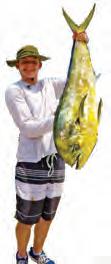
live sardines will be your best bet for steady kingfish action. Bottom fishing with chicken rigs and cut bait will produce good snapper bites. Expect a stray cobia in


the mix, always have a cobia jig tied to a large spinner in the event one swims boat side looking for a quick easy meal. Tight lines!
always
For Reservations Call (772) 334-4411
Located at Pirates Cove Resort and Marina 4307 SE Bayview St. Port Salerno/Stuart, FL www.Safari-1.com
a wary eye to the sky and monitor available radar loops to best make strategy decisions in relation to approaching summertime storms.
With safe fishing strategies in place, anglers will be able to enjoy the versatile fish games of July and attempt to come out on top of their fish rivals.

TRIP TIMES
Monday-Saturday 8:30AM-1:30PM
Adults $70; Children $60
Sunday 8:30AM-3:00PM
Adults $80; Children $70
It’s
“MuttonTime” aboard the Safari 1! #MuttonFancy

Miss Fort Pierce Fishing (772) 766-0191

fortpiercefishing.com
AsJuly is upon us, the fishing for snappers continues. We come upon the spawning of the mangroves. As this occurs, they tend to feed heavily. You can catch them on the rough bottom in 50-to-80 feet of water. The preferred bait is “grunt plugs,” sardines, mullet or live shrimp. Fish with 30-to-40-pound test line on an 8-foot leader on the bottom.
Mutton snapper fishing continues in 60-to-110 feet of water. The mutton snapper tends to spawn in July. Fish with 12-to-30-foot leaders with 40-to-60-pound test line on the sandy bottom adjacent to the reef or wreck structures.

We look forward to the two-day red snapper season on July 14 and July 15.
We look forward to welcoming you aboard the Miss Fort Pierce.
The Miss Fort Pierce will continue to sail daily for snappers at 7 a.m., all day by reservation only. Special red snapper trips and 12 hour “Iron Man” mutton/mangrove trips as well. Go to www.fortpiercefishing. com for information.

Be safe on the water and we look forward to meeting you on board.
St. Lucie Flats Fishing Charters


(609) 820-6257
www.stlucieflatsfishing.com

Summer has arrived on the Treasure Coast. July is always one of my favorite months to enjoy the fishing the Treasure Coast has to offer. Whether inshore or offshore there is always something to target. It is a time to get out early or late in the day and avoid the afternoon heat and storms. You definitely have to keep a closer watch on the storms as the summer progresses. This is time to start looking for large mutton snapper in shallows off the beach. Anchor just off the reef in 15-to-30 feet of water. Using smaller split shots or even no weight at all has been the best approach for me. Make a good long
Capt. Bo Samuel
Pullin Drag Charters
(772) 971-6661
facebook.com/Pullin-Drag-Charters catainbofishing@gmail.com
cast away from the boat and pay out line as the bait is sinking. Once it comes to rest on the bottom, I let the rod holder do all the work. Cut bait seems to be more effective for these shallow muttons. Fresh cut or frozen sardines, grunts, pinfish, or greenies are all good bait choices for big beach muttons.
Getting out a little further off the shallow reefs and slow or bump trolling live baits around the bait pods in 30-to-50 feet of water is a good way to target kingfish throughout the summer. There is no mistaking the blistering runs these fish are capable of when you hook up to a smoker king. Along with kings, you will encounter hard fighting bonitos, cobia, and the very occasional dolphin hanging around the shallow bait pods.
Getting back to inshore, this is prime tarpon time for our fish in the river and around the inlet. North jetty, Big Mud, and the Turning Basin are all consistent locations to find tarpon. Drifting with live or
Day, there will be “fire” in the water, too! July promises to be as hot and fishy as June for trolling and bottom fishing with calm seas bringing plenty of opportunities to get out on the blue. The fishing off Fort Pierce has been extremely successful and I expect it to continue throughout the summer so beat the heat by catching your own salty groceries.
The biggest “bang” right now is the news from NOAA Fisheries that two harvest dates have been
natural baits like crabs, or mullet during the daytime is a good way to get a bite from the hardest fighting inshore fish we have locally. At
night using live shrimp or small pilchards around the dock lights and bridges is another solid tactic for tarpon keyed in on small baits.
granted for red snapper season, July 14th and 15th. Anglers all along the Treasure Coast will be gearing up for these red snapper days because, while they are frequently caught during the year, they can only be kept the two designated days. Hopefully, as each year establishes that the red snapper population is healthy and thriving, a longer season will be offered.

July is usually a great time to find bait along the beaches which means snook, tarpon, and jacks can be targeted there. Pulling drag on one of these great fighters will get even the most experienced angler fired up! The mangrove bite has been stellar in 70-to-100 feet producing some big ones at 10-to-12 pounds. I recommend using live threadfins or frozen sardines. Snapper fishing
also brings fantastic opportunities for black, gag, and red grouper.
Finally, July also sees one of Florida’s saltiest traditions, the two-day lobster mini-season! Miniseason, always the last Wednesday and Thursday of the month, kicks off the highly anticipated regular lobster season that begins on August 6th and you can expect more boat traffic and lots of divers in the water. Many anglers are divers too but if you’re not a diver, trade some scales for tails and let the seafood fest begin.
Wishing everyone a safe July and on-fire fishing! Call me to make a catching trip part of your summer celebrations or just come visit me at my home base of Little Jim Bait & Tackle. Always grateful for the freedom to keep Pullin Drag!
Capt. Gus Brugger
Pattern Setter Charters (772) 360-6787




www.WelcomeToSebastian.com
An early start to the fishing day allows the angler to beat the July heat and guards against being caught on the water during the afternoon thunderstorms which can be an everyday occurrence this time of year. This is the time of year when you can plan a trip that can result in an inshore slam with trophy sized snook, reds and tarpon topped off with smoker kingfish and maybe a cobia or sailfish, all from a flats skiff, and be back at the ramp before the first thunder cloud forms.
SEBASTIAN RIVER – Looking for rolling tarpon in the predawn gray light in either fork of the Sebastian River is a great way to start any day. Sight casting to rolling fish with flies, D.O.A. TerrorEyz jigs and small plugs is an exciting way to target these 5-to-50 pound tarpon. Live mullet are also an excellent option once you find the fish. Once the sun is up, fishing the docks and shady shoreline cover with D.O.A. shrimp, jerkbaits or plugs is a good way to target snook in the Sebastian River.
INDIAN RIVER LAGOON –Finding a shallow water area with a school of mullet milling around on it in the early morning is the key to topwater plug fishing for seatrout and redfish in the Indian River Lagoon in the summer. Super Spook Jr. and other 4-to-6 inch topwater plugs fished around and through these milling mullet will get the attention of predators shadowing the mullet schools. Later in the morning fish drop-offs and deeper cuts with jigs for trout and ladyfish or hit the shady shoreline cover and docks for snook and reds.
SEBASTIAN INLET – Big redfish and snook will stack up at the mouth of Sebastian inlet on outgoing tides throughout the summer. They will hit live baits of all types fished on the bottom. The bull reds will move inside the inlet and pick off small crabs floating out with the tide especially around new and full moon periods, topwater plugs, live
crabs and flies will catch them. With snook out of season, keep in mind that a large percentage of snook caught and released around the North Jetty wind up as easy meals for goliath grouper and sharks, so please limit that activity for the good of the snook population.
NEAR SHORE ATLANTIC –
The consistently calm ocean conditions in the morning allow small boaters to venture out into the open ocean. The warm clear waters draw king mackerel, bonito and cobia close to the beach. Large tarpon, Spanish macks, big jack crevalle and the occasional sailfish are also a possibility. Having a livewell full of mid-sized mullet and/or greenies is a must. These can be cast to rolling tarpon or any other species that show themselves. If nothing is showing, slow trolling a live mullet or greenie, especially on a downrigger set at mid depth, can be a very productive way to get some kings for the smoker or any of the other mentioned species. Look for bait pods, bottom structure, current edges or even weed lines to narrow your search.
July is finally here, my favorite month of the year for fishing. The good weather gets us more days offshore, combined with more consistent water quality. Warm clean water equals more consistent fishing. Remember though, when the water gets warm and clear, fish get picky. Light fluorocarbon leaders and live bait will produce more bites. Fortunately, live bait should be more readily present both inside and outside the inlet.

We’ll see good catches of mutton snapper, mangrove snapper and kingfish. Last year we only saw a mild thermocline, but we did have a couple of days fishing the beach reefs, although it passed quickly. Other than that, we should have some good kingfish on the 80-to-90-foot reefs, bigger fish will be hitting live bait. Strip baits trolled behind a Sea Witch and 3½ drone spoon works well also. For those trolling offshore, there
should be some schooly dolphin some even into the 80 and 90 foot reefs. They’re always a nice addition to the box When your anchored up and
a school swims up. This is when it’s good to have a couple light spinners ready with a #4 or #5 Mustad short shank with a 30-pound fluorocarbon
leader. Have some chopped up pieces of squid ready to throw to keep their interest as well as to stick on the hook to capitalize on the opportunity.
Bottom fishing should be good on the reefs in the 80-to-90-foot range. Clear water is going to require light leaders and live bait to entice a bite there as well.



As always, the ever-growing shark problem will be something to deal with. If there’s any upside to the abundance of sharks, it’s that they’ve had cobia traveling with them. There’s a thin line between fishing heavy enough line to horse the fish in before the sharks eat them yet light enough to get the fish to bite. I’m hoping some group, individual or fishing club will put together a shark tournament. One tournament of 100 boats would start putting the uneven balance back where it should be. Meat from the shark could be donated to local food banks. Believe me, people that are saying this is a sign of a heathy eco system do not see what’s really happening out there.
As always support your local tackle shops, be courteous to your fellow anglers, one day you might need their help, be nice to your law enforcement including our FWC. They’re just doing their job.






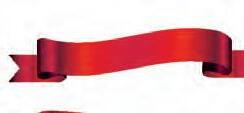



“Fish on...gotta go!”
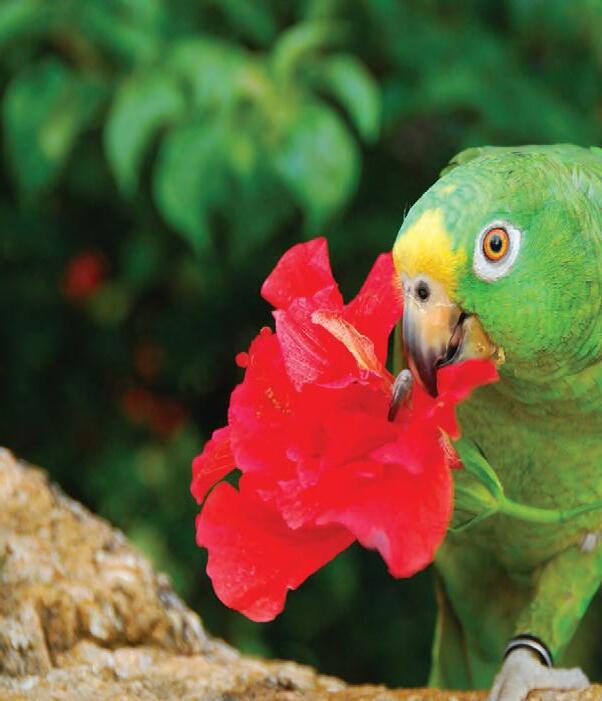
Shellen Guide Service
Okeechobee Bass Fishing Guides/Charters
(863) 357-0892
sjmike7@aol.com
OkeechobeeBassFishing.com
Headwatersfishingguide.com

The bass fishing scene at Lake Okeechobee has been nothing short of exceptional. Anglers from all over have been flocking to this renowned Florida fishing destination, and for good reason. The lake’s water levels have remained stable, providing ideal conditions for bass to thrive, and creating a haven for anglers seeking trophy catches.

During the early morning and late afternoon hours, topwater action has been explosive. Anglers using buzzbaits, poppers, and frog imitations have seen tremendous success in enticing big bass to strike. The fish have been particularly active near vegetation and submerged
structures, where they have been ambushing baitfish and other prey. Anglers should focus their efforts on targeting these areas for the best chance at landing a trophy-sized bass.
As the day progresses and the sun climbs higher, switching to soft plastic lures such as worms, creature baits, and swimbaits has proven effective. Fishing along the edges of lily pads, reeds, and submerged grass beds has yielded consistent results. Texas and Carolina rigs have been
the go-to setups for targeting bass in deeper water.
Anglers should keep an eye out for any signs of schooling activity, as bass have been congregating in large numbers to feed on schools of shad and other baitfish. Casting crankbaits and swimbaits into these feeding frenzies has resulted in multiple hookups and adrenalinepumping battles.
It’s worth noting that water temperatures have been steadily rising, so adjusting techniques and
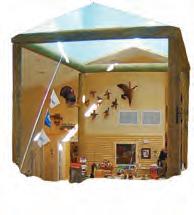
depths may be necessary as the day progresses. Paying attention to subtle changes in water temperature and fish behavior will be key to adapting and staying successful throughout the day.

Overall, Lake Okeechobee continues to live up to its reputation as a top-notch bass fishing destination. Whether you’re a seasoned angler or a novice looking to test your skills, now is the time to hit the water and experience the thrill of reeling in some truly impressive bass.

Costa Del
• Services: Rod and Reel Repair-Custom Rigging
• Huge Variety of Frozen

 Chris Beachwalker Sharp
Chris Beachwalker Sharp
(772) 320 8611

beachwalkerfish@gmail.com
July fishing from land is the best time to fish for catch and release snook and big tarpon. Snook will be all over the beaches and it won’t take much to catch these breeding fish. When fishing for them I change all my lures to circle hooks so not to harm the fish and let to live another day.
My favorite to throw is Yo-Zuri Crystal minnow in black in silver. I always go before sunrise and fish at night to get numbers. If you fish at low light times you are able to catch a lot more fish and also beat the heat.
The bait pods have shown up on the beach and once you find them, it won’t be long until you get a bite. Look for beaches that have structure or deep drop offs. The best ones will be Walton Rocks, House of Refuge and Hobe Sound Beach.


You don’t have to have a big set up: a 4000 reel, 20-pound braid, 7 ½ foot rod and 30-pound leader will


get the job done. Soft bait guys can’t beat using paddle tail baits to your catch either. Henn Lures are some of the best lures you can use with jig heads that offer circle hooks.
Tarpon will also be there about the same time you are throwing for snook. Right before sunrise you
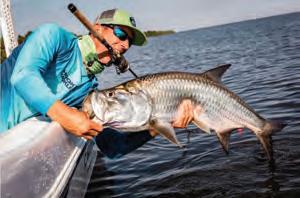

will see them roll. My first choice is a clear paddle tail 6-inch from Henn Lures with a circle hook jig head. I cast right in front of them and reel slowly to get a bite. I use a 8-foot rod paired with a 5000 Penn Slammer reel with 30-pound braid and a 50-pound leader. Hard baits



work well if there are mullet schools around but if small baits are in the water, throw soft rubber baits. Don’t overlook your local spillways either, especially when it is raining.
Have a Happy Fourth of July and tight lines!

“Ten percent of the fisherman catch 90 percent of the fish,” said Jon as he took a sip from his coffee and went back to silence and staring at the pool we were fishing that night on the river Orkla in Norway.
I never questioned my old friend who doesn’t talk a lot but happens to be the most knowledgeable Atlantic salmon fisherman I’ve ever met.
Decades later I still believe this to be true but, what is the reason and what makes the difference? I’ve come to realize it’s a combination from a variety of factors but, the one that stands out most me, as a guide, is mindset. I’ve fished with a lot of good fly fishermen but looking back, I can just name a handful who had this mindset and knowledge that put them above all others. So, what is it and how can I use it for myself?
Mindset: Trust in yourself and what you are doing but always keep an open mind for changes and adjusting for different situations. Most importantly, expect a bite instead of hoping for one!
Knowledge: … is king! The more you know in specific about fish species, seasons, areas, bait, tides and/or currents, tackle, and fishing techniques, the more you’ll find the right place at the right time using the right technique.

Capabilities: That’s you! Practice your fly casting and presentation, rod position, line handling, strip setting (or trout setting depending on where you are fishing) and how to fight fish. The better you function while fishing, the better your success rate will be! No worries, this is a lifelong process!

Last, but not least, you won’t catch each and every fish even if you’ve mastered the above but, you will have more success on average by using all the tools you acquire with experimental and practice.
Capt. Michael Mauri www.mauriflyfishing.com
michael@mauriflyfishing.com
(772) 485-3321


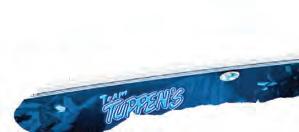


The 29th Annual Sebastian Blue Water Open Charity Offshore Fishing Tournament was a tremendous success! The event took place Saturday, June 3 with a fleet of 132 registered boats. It was a great day of fishing with lots of big fish weighed in.
The main board fish categories were dolphin, tilefish, kingfish and grouper, and all 12 positions were filled. A bonus board gave an additional 15 places to win some cash.
Here are the results.










Dolphin: First place with 16.79 pounds went to Sebastian Myths with Capt. Ray Harrison;

second place, 15.28 pounds caught on Fishmonger, Capt. Garry Becker; third place, 12.89 pounds, Just the Tip, Capt. James Beyer.
Tilefish: First place, 27.69 pounds, on Tail Chaser, Capt. John Hardin; second place, 21.56 pounds, Reel Natives, Capt. Taylor Stark; third place, 20.33 pounds, Alcoholics Aknotymous, Capt. Sonny Richards.
Kingfish: First place, 35.10 pounds, Catching Smiles, Capt. Eric Urso; second place, 34.46 pounds, Easy Drinking, Capt. Joel McKinney; third place, 27.74 pounds, Ms Understood, Capt. Darwin Harrelson.
Grouper: First place, 42.46 pounds, caught on the Jaw Ga, Capt. Brent May; second place, 40.86 pounds, Reel Commis, Capt. Jason Bistarkey; third place, 37.58 pounds, Side Piece, Capt. Michael Gressinger.
Amberjack, wahoo and swordfish were the bonus fish this year. The boat Side Piece won the top amberjack weighing in at 42.04 pounds with Capt. Michael Gressinger. The top
wahoo was a whopping 88.19 pounder caught on Strictly Business with Capt. Chad Painter. No swordfish were weighed in.

Top lady angler was awarded to Becka Ashley, fishing aboard Reel Estate II with Capt. Justin Kessler. Becka snagged a 31.81-pound grouper for the prize. Nice catch, Becka! Becka received a hand-crafted

Kayak fishing sure has become one of the most popular ways to catch fish! It is definitely a great way to get fresh air and enjoy the outdoors, and hey get a little exercise too. As well as a way for Angler’s to avoid the hassle at busy boat ramps. What’s a kayak it gives us a freedom to launch on small canals and creeks down little roads off the beaten path, where we are unlikely to encounter any traffic if at all.
Pssssh the fish don’t care or can see what color your kayak is. So if you want lime green or pink go for it or bright colors to express you while you live your passion and enjoy the outdoors go for it! It also allows boaters to see you from a far keeping you safe especially while there are motors buzzing around and also keeps other kayakers from inadvertently blowing up your fishing spot. And let’s face it brighter colors make for a better and more vibrant fish photo.
Yeah fishing is all about the adventure being in tune with nature and the ability to scout and find new honey holes. Fishing for my kayak has its bonuses, such as getting back into those skinny waters, Skimming inches deep across grassy flats, marshes and paths through creeks and canals. What a kayak the passion and the will to, it can take you places that even flats boats can only dream of.
Finding the right kayaked it fits your fishing knees does take a little research. Would you prefer a sit on or sit in kayak.? What is suitable for your size? Would you like a kayak that you can stand on and fish? These are the questions that go on and on you need to ask yourself before making a purchase.
I recommend putting in the work and doing your research as much as possible. Watching YouTube videos is a great start Reading reviews and getting insight from other Anglers who fish the way that you intend to and target the species you would like to catch.
I prefer a sit in kayak and allows me to sit higher giving me better visibility amd a quicker reaction rated while sitting to to cast and or rest or while on the move. With your deck on your sit on kayak I find it a lot more stable and easier to stand up while site fishing.
For paddling and peddling long distances Having a longer narrow kayak helps with tracking straight as well as faster when traveling across large bodies of water. Of course You’ll have to give or take that being said giving up a little bit of stability with a more narrow fast track and kayak. However is worth it if you plan to cover lots of water and enjoy traveling and the journey.
I myself have a pelican 130 HD hydryve With a paddle drive system. It gives me the ability to cross large bodies of water and rivers with depth. And within seconds I can easily pull the plug the dryve system back in. Example when I’m fishing the flats I’m able to pull the system and 99% of the time I am paddling or polling rather than peddling due to being in inch deep water.
My pelican has amazing tracking, lightweight and has a wide deck with the space and stability to stand and sight cast my catch.
As I understand it, many anglers believe we need to blend with nature in their vessel with earth tones such as greens tans brown camouflage neutrals.


To save time and for safety while on the water you can use a piece of styrofoam or a quarter piece of pool noodle to hook your choice of lures on for switching baits and saves you time while the fish are blowing up as well preventing me from hooking myself and having to go into dry storage to get to my tackle box. While fishing skinny water and chasing Reds on the flats. A push pole can be your best accessory for maneuvering through the shallows and keeping your stealthy when stalking your catch.
I find a paddle holder can be your best friend while polling it not only keeps your paddle in place but also pairs with your push pole allowing you to stake out your vessel. This is very useful for anglers as myself who enjoy getting out of the kayak to wade.
There are plenty of accessories out there to make your kayak fishing experience much easier so you can stay productive! Starting with basic. An anchor, I prefer a yak floating stick to steak.


Being sure your kayak is equipped with rod holders and a storage system for tackle and tools. Your paddle is prop ably your most important accessory being sure you have the proper shaft length for the width and length of your kayak. I purchase my accessories from yak gear and railblaza. Also if you are a live bait fisherman, I find using a small cooler instead of a bait buck maintains your water temperature keeping your bait alive longer making you one happy fisherman!
SKYE BURKHARDT
Follow her social media: @Brassyangler87






















event. Since 2008, the yearly cleanup effort has removed 99.25 tons of trash from the waterways of the Treasure Coast. The traditional cleanup event, including the Peck




option continues to be popular with many folks, particularly students needing those precious community services,” says April Price, event coordinator. “Students



business days enjoyed the outdoor group activity. Our cleanup week will kick off on Saturday, July 15 with the start of our annually proclaimed Treasure Coast Waterway Cleanup
event’s carbon footprint, the Marine Industries Association of the Treasure Coast (MIATC), encourages online registration and data reporting. Additionally,









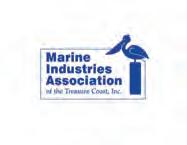
the event continues to replace disposable gloves and bags with reusable options. Volunteers are encouraged to bring their own reusable cleanup tools if they own them. Supplies will be available for all volunteers at the designated sites on Saturday, July 22. Combined, there are 25 cleanup sites in Martin, St. Lucie and Indian River counties.
Volunteers are encouraged to pre-register and choose the cleanup option that suits them. All volunteers are eligible for a collectible t-shirt and if joining the effort on the water, the annual commemorative burgee too.


“This is the perfect summertime activity for community, youth and civic groups. There is no limit to the number of folks who can participate on your team. If you have questions, just give us a call and we are happy to coach you on how to get your group engaged,” says Price.
Cleanup participants are

encouraged to photograph their efforts so they can be shared on the event website and Facebook page. Due to great sponsorship support, this year all participants who submit their collection data online will be entered into an online raffle that will be held in August. Corporate sponsorships and raffle prizes are always welcomed and truly appreciated.
The Marine Industries Association of the Treasure Coast, Inc. (MIATC), is a not-for-profit trade association representing recreational marine businesses in Martin, St. Lucie, and Indian River and Okeechobee counties. MIATC is dedicated to the promotion of pleasure boating and its related industries.




Be part of the solution to pollution! For more information contact April Price, (772) 285-1646 or go to www.tcwaterwaycleanup.com.

Rafting up with friends on the water to kick back and relax is a great way to enjoy your summer days.
It’s best to have a few ground rules to prevent unintentional bumps, scratches, misunderstandings, and the like. Here are 5 tips to make sure it all goes smoothly.



Location: Rafting up out of the wind, out of the current, and away from any place that may have serious boat wakes is best. Ideally, look for a place that is buffered by the shore with access to shallow water or a beach where kids can wade, swim or dinghy to shore.

Anchoring: Start with the biggest boats in the middle and smaller boats on the outside edges for balance. The largest boat should anchor first and set one off the bow and one off the stern for added security.




Permission: When tying up alongside another boat in an existing raft always ask for permission first. If you don’t know the skipper, approach slowly and ask to join the raft from a safe distance.
Fenders: You’ll need several, at least two or three per side, depending on boat size. Bring the biggest ones you have (a minimum of 10 inches) and secure them along the side of your boat before you approach the raft to tie up.

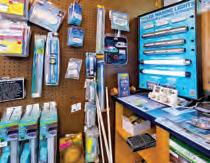

Boat Alignment: To avoid climbing over gunwales, it’s best to align swim platforms to move from boat to boat. Tie off at the bow and stern and use spring lines amidships to fine-tune positioning.





Practice safe boating, be courteous of your neighbors and follow these tips the next time you raft up.





The level of Lake Okeechobee is at 14.01 feet above sea level on June 9. That’s about 1.5 feet above where the Army Corps of Engineers wants the lake level on this date of the year, a week after hurricane season has already officially begun June 1.

A foot and a half? What’s the big worry, Ed?
Times that foot and a half by 730 square miles. That’s what makes a little bit of water suddenly sound like a lot. It’ll take the Army Corps six months to shed that much water off the surface of Lake Okeechobee.
Discharges from the lake are in the “when” column, not the “if” column. These numbers are why it matters to boaters, fishers and anyone who spends time along the waterfront in Stuart, Palm City southern Port St. Lucie or Jensen Beach:
• 2013 - Level of Lake O on June 1: 13 feet, 25 inches. Total discharge volume to St. Lucie River: 136.4 billion gallons, 6 months
• 2016 - Level of Lake O on June 1: 14 feet 3 inches. Total discharge volume to St. Lucie River: 218.9 billion gallons, 10 months
• 2018 - Level of Lake O on June 1: 14 feet 1 inch. Total discharge volume to St. Lucie River: 80 billion gallons, 5 months
In all three cases toxic algae was moved from Lake O to the St. Lucie River where it was visible for months. In 2016, it was so bad, Martin County emergency management officials were forced to

close its public beaches for a few weeks around Fourth of July holiday weekend. The economic impact could not be measured, but millions of dollars of potential revenue was lost each year as fishing charters were canceled, kayak stores and tackle shops went out of business and hotel rooms went unbooked.
I’m not a soothsayer or oracle. But I have been living in the shadow of Lake Okeechobee for 50 years. The Corps will be the first to tell you there are only two mechanisms to discharge water quickly from the lake - through the Caloosahatchee River to the west and through the St. Lucie River to the east. Even then, the agency will tell you water can come into the lake 6-times faster than they can get rid of it.
The algae is hard to forecast. It’s in toxic concentrations one day, then 10 miles away the next day it’s not.
The looming question remains for those of us downstream: Will the Army Corps dump toxic algae-laden water onto coastal residents? Well, I guess we have to go to Clint Eastwood for the answer to that question. The lake’s high level is like Dirty Harry’s .44 magnum pointed at our heads:
“I know in all the excitement you’re wondering if I squeezed off six shots or five. To be honest, I can’t remember myself. So ask yourself one question - Do you feel lucky punk? Well, do ya?”
For our sakes, and with all due respect to Clint, I hope we’re lucky enough not to have another summer where the St. Lucie River is full of harmful algae.


The St. Lucie County Artificial Reef Program is dedicated to creating additional recreational destinations for boaters on the Treasure Coast. Over the last 18 years, the program has made 68 artificial reef deployments resulting in 57 new recreational destinations.
Reef design is important and follows the recommendations of the Program’s advisory committee. Many of the reefs the County has deployed have consisted of one or two barges of concrete materials. At 500 tons of materials per barge, reefs can be either 500, 1,000 or 1,500 tons. The County also made 166-ton reefs (3 reefs per barge) as ancillary reefs to the CCA -Curtis Bostick Reef. This summer, 1,500 tons of materials were deployed in separate 500-ton piles separated by 25 feet of sand bottom between each pile. This was done to test the effect of having a sand/hard bottom habitat on fish assemblages. Observations of schooling lemon sharks (Negaprion brevirotris) and mutton snapper (Lutjanus analis) on sand bottom adjacent to two of the County’s artificial reefs led to this design.

Subject to confirmation by postdeployment dives, the new reefs were deployed on April 22, May 2, and May 10 at 27o31.3652’N, 80o11.1431’W, 27o31.2525’N, 80o11.1295’W, and at 27o31.2393’N, 80o11.1427’W, respectively. The reefs consist of a variety of structures such as drainage structures from American Concrete Industries and building footers from the H.D. King power plant. Fish assemblages on these reefs, deployed at 55-foot depths, are likely to include blue runners (Caranx crysos), snook
(Centropmus undecimalis), kingfish (Scomberomorus cavalla), various snapper species, and Goliath grouper (Epinephelus itajara). Yellowtail snapper (Onchorhycus chrysurus), black seabass (Centropristis striata), and tomtates (Haemulon aurolineatum) have also been recorded around these reefs.
The County deploys shallow reef as well as deeper reefs to maximize the boats that can use the reefs. This year’s reefs were deployed within recreational dive limits (z=50-60 feet) to provide opportunities for smaller boats and divers with open water certifications. Boats deployed in the last 2 years were all deployed deeper than 150 feet to ensure their stability. These vessels reefs include the Blake Charron Foundation Reef (85-foot Tug Singleton), Aftersome Reef (420foot hopper barge), Captain Patrick Price Reef (97-foot M/V Last One), and the Daymaker Charters Reef (65-foot Spirit of Palm Beach). In addition, the A.A. Hendry Reef (127foot M/V Time) will be deployed by the Marine Cleanup Initiative (MCII) after the writing of this article.
The St. Lucie County Artificial Reef Program has begun partnering with the MCAC Artificial Reef Fund and MCII, two 501(c)3 nonprofit organizations, to deploy vessels on the Fort Pierce Sportfishing Club Artificial Reef Site, roughly equidistant from the St. Lucie Inlet and the Fort Pierce Inlet. MCAC found the Last One, Spirit of Palm Beach, and Time, while MCII has had events to raise the visibility of these deployments.
Like most of St. Lucie County’s artificial reefs, funding for the three

reefs came primarily from the Florida Fish and Wildlife Conservation Commission’s Artificial Reef Division. Additional funding has also been pledged by the Blake Charron Foundation. This foundation paid for the 2021 deployment of the Tug Singleton, now known as the Blake Charron Foundation Reef. Because this reef was deployed in waters too deep for recreational diving, the Blake Charron Foundation wanted to create a reef in shallower waters and
has pledged funds to deploy a fourth 500-ton reef. If completed, this reef would be deployed at 27o31.226’N, 80o11.156’W. This would create a long row of reefs that could be used for both drift fishing and drift diving.
To learn more about the St. Lucie County Artificial Reef Program efforts to create additional recreational destinations or to learn about the program’s other projects to create fish habitat, contact Jim Oppenborn at oppenbornj@stlucieco.org or (772) 462-1713.

rod and reel combo.
The junior angler this year was Kaiya Jones, who caught a healthy 20.70 pound kingfish on the Slab Grabber with the guidance of her dad Dustin Jones and Capt. Richard Strickland. Kaiya was awarded a kayak.

This year’s Blue Water Open saw a lot of big kingfish, grouper, and wahoo. Between the main board and the bonus board, 8 kingfish took home winnings, ranging in size from 35.10 pounds to 20.70 pounds, and 12 grouper placed, ranging from 42.46 pounds to 26.37 pounds.


The Blue Water Open Chairperson, Michelle Morris stated, “A big thank you to sponsors, fishermen and volunteers for making this tournament such a success. We are so fortunate to have a generous community. With their help we will be able to continue funding child abuse prevention and many other local community programs.”
All the funds raised by this event are distributed to local charities, with a focus on the prevention of child abuse, Americanism, youth activities and community service. The Sebastian Exchange Club meets every Wednesday, except the first Wednesday of each month, at noon





at Capt. Hiram’s Resort. Anyone interested in getting involved in the community is welcome to attend.
For more information and photos, visit www.bluewateropen.com.

10 9 8 7 6 5 4 3 2 1

We don’t just reach anglers. Our readers enjoy all of the outdoors and a variety of recreational activities.
Reach an exclusive demographic: 90% male, 80% home owners, 35% college degree, $82K annual income.
Geo-Target your ad to reach: 10,000+ locally, 190,000+ throughout Florida, or over 400,000 nationally.

A FREE publication means new readers and “fresh eyes” each month that see your ad.
Local editorials from the area’s most experienced fishing guides, charter captains, and writers.
A rate schedule that offers the lowest cost per thousand impressions in the industry.
For the small business a regional or national ad can be a life-changing event.
Your ad will also appear in Coastal Angler Magazine’s E-magazine, marketing your business on the Internet.

We are the largest Free outdoor publication in the US, Puerto Rico and the US Virgin Islands with over 400,000 readers each month.
You are not buying an ad, but investing in your business with Coastal Angler Magazine.
When hurricane season hits, it’s imperative to start thinking of how to prepare for a storm. Sea Tow is offering up tips for boaters before, during, and after a hurricane.
•Check your marine insurance and marina policies carefully for storm information. Boat owners should speak with their insurance agent and marina contact to understand all procedures and requirements during a storm situation.
• Document inventory of all property onboard and be sure to take videos AND photographs. Place legal documents such as policies, licenses, and registration in a secure, dry place away from the vessel.
• Learn the difference between a hurricane watch and hurricane warning and the area’s evacuation rules and instructions.
•Be knowledgeable of the storm surge history and the area’s elevation.
•When a storm is impending, consider where the boat will ride out the storm. Boaters who will relocate their vessel should make a plan ahead of time. Insurance companies may require owners to haul out the boat or store in a specific location. Be sure to check the policy.
•Move boats on trailers close to a house, weigh them down and lash securely to anchor the trailer.
•If the boat must stay in the water, secure it to the dock with longer, thicker lines and use lines that are protected against chafing so that they will hold up to the swinging and swaying that is often caused by storms.
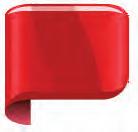









• Frequently monitor radio, TV, NOAA Weather Radio, and/or hurricane hotline telephone numbers for official bulletins of the storm’s progress.
•Once the boat is secured, leave it, and don’t return until there is an official announcement that the storm has passed.
•Inspect the boat carefully before re-entry into the water. Look for any structural damage outside or damage to the lashings or riggings placed prestorm.
•If the boat is affected by the storm, Sea Tow is available to assist with the recovery process. Contact your local captain or call their 24/7 Customer Care Team at 1-800-4-SEATOW to help with the salvage and recovery process. Sea Tow has the experience and knowledge to safely recover your property. Make sure you only work with licensed and insured companies that do this type of work every day.
To learn more about Sea Tow’s catastrophe response capabilities, visit https://seatow.com/marine-services/catastrophe-response/
Summer, my favorite time of year, is here, and it’s hot out there, so this month I would like to alk about coolers! No, this will not be an article about the best cooler on the market. There are a large variety of rotational molded, better known as roto-molded, coolers available, and all offer the capability of keeping ice for multiple days. In this article, I would like to share with you some tips on how to get the most out of the ice in your cooler.





Roto-molded coolers, such as my Icon Cooler 50 (pictured), contain up to 3 inches of polyurethane foam insulation. This is what allows rotomolded coolers to stay cold and keep ice for up to 7 days. So how do we keep the ice from melting?
1. Pre-Ice the Cooler. Generally, coolers are kept in the boat, outside, tied down in the back of the truck or on a shelf in the garage. All of these areas can get pretty hot during the summer. Pre-icing a cooler the night before it is needed brings the core temperature of you cooler down below room temp and will prepare your cooler to have items placed in
it. I pre-ice my cooler by adding a 10 pound bag of ice inside the cooler before closing and latching the lid. The following morning, drain any melted ice, replace the ice, and your cooler is cold and ready for food and drinks.
2. Pre-Chill Cooler Contents. According to Rubbermaid.com, “Two six packs of soda or one gallon of liquid will melt approximately 2.5 lbs of ice just to cool from room temperature.” To eliminate ice melt, simply pre-chill your food and drinks in the refrigerator overnight while your cooler is pre-icing. Adding cold items to a cold cooler will aide in making your ice last longer.
3. Don’t Drain the Water. The common misconception is to drain the melted ice water inside your cooler. But the water plays a vital roll in keeping your cooler cold and the remaining ice to last. Each time you open the cooler lid to get an ice-cold soda, warm air enters the cooler. The melted ice water fills the empty space in you cooler, keeping the warmer air out. When the water is drained, there is more space for the warm air to enter between ice cubes, increasing the speed at which the ice melt. The only time to drain the water is when you are replacing or replenishing ice.
4. Keep Your Cooler in the Shade. Of course, keeping your




cooler in the shade is common sense, but it may require physically moving your cooler several times throughout the day to ensure it isn’t sitting in direct sunlight. If it has to be in direct sunlight, placing a wet towel on top of your cooler will help keep it protected. Is there a specific fishing topic you would like me to discuss? Feel free to email me your questions at jonthan@ gocastaway.com. Tight lines!

First wahoo for B.J. Rogers caught while fishing on Second Home out of Port St. Lucie. Tackle was a Speedmaster 20 using 30 lb mono, 6-inch wire leader with a strip of fat bonito belly on double 7/0 hook and covered with a blue and green chub.





“We were all relaxing and goofing around on Little Coconut Island across from Sandsprit Park with the kids when we heard our line screaming from the boat. Eric grabbed it because it seemed too big for the kids to reel in, and he pulled it right up on the beach. The kids thought it was so cool and it luckily was a slot at 29 inches, so it became dinner that night.”




 Tim Barefoot
Tim Barefoot
We are seeing a heavy line of sargassum right now. Here’s how to make the best of it.
Along with grass comes sh. We’re having a great dolphin year, with some nice yellow ns and wahoo in the mix. e grass is a wonderful thing if you know how to take advantage of it.
It’s a well-known fact that the surface trolling bite slows as the sun rises to the 10 to 11 a.m. position. is is the reason to get baits down where the sh are, rather than continuing to troll surface baits while the one “meat stick”—the deep planer rod—gets all the bites. Tuna and wahoo don’t wear Maui Jims. When the sun penetrates deeper into the water, they simply go lower in the water column.
And… who says you have to be moving at 6-8 knots to get bites? Why not slow down and put several lines down where the sh are? It can result in steady, sometimes multiple hook ups. ere are several ways to accomplish this. You can use downriggers with release clips, use heavier trolling lures that fall when you occasionally take the boat out of gear, or use planer lures coupled with a slower speed to get baits down.
For example, a beautiful swimming (frozen) squid or ballyhoo on the downrigger is a ringer for the wahoo and tuna bite. An arti cial squid with an attached natural bait on a planer jig head or a deepdiving plug will also get bites. In addition these choices, a spread of slow-trolled live baits down deep is the ultimate o ering. We have several videos detailing the options listed above on our website.

With all the sargassum grass this year, this may be an especially attractive alternative to the standard 7 knots. When you’re constantly “shaggin’ grass,” you’re not as e ective, and it’s not good for moral when


deck hands ght more grass than sh. If you slow troll down a nice weed line with beautiful baits down deep in the strike zone, chances of getting bites are much better than shaggin’ grass at normal speed. Find structure and bait near a weed line and you’ll have the scenario for success. With or without structure or marking bait, the weed line is home to all types of life. We’ve cleaned yellow n tuna with a double handful of le sh in their stomachs the size of a quarter and smaller, along with small bit of grass.
If the weeds are not too scattered, troll as normal to nd the sh. When the sun gets up, slow down and concentrate on the areas you had bites earlier. Remember that the weeds are moving, along with everything that lives and feeds around the mats. Keep an eye out for other items oating in the grass mats to help keep up with your relative location.
For more from Tim Barefoot, go to barefootcatsandtackle.com.
As I write this, the largest mass of sargassum ever recorded is making its way to the Florida coast. For months, forecasters have been bemoaning the mess this 5,000-mile-long weed patch will make on our beaches, but I’m looking forward to what it brings.
Prey species live in the seaweed, and predators congregate around these weed lines. ere are going to be many di erent species of sh moving in closer than we usually get. Many anglers will enjoy chasing the larger predators; however, it’s fun to catch what we call peanuts, which are the small er dolphin sh that school up around the weeds.
e most distinguishing feature of dolphin sh is the bright neon green, yellow and blue coloration throughout their entire body. Dolphin have a long slender body, and the peanuts are typically 2 to 3 feet, with weights from 5 to 15 pounds. Dolphin get much larger than this, but the big ones don’t exhibit the same schooling behavior.
An amazing feature about dolphin sh is their dorsal n, which starts at the skull and continues all the way to the tail. To determine gender, male dolphin will have a more pronounced forehead, which almost becomes vertical with a 90-degree angle. Unlike most species of sh, the males tend to be larger than the females and are known as “bulls.”
Dolphin inhabit subtropical and tropical waters throughout the entire world. ey live o shore in the 70- to 300-foot depths. eir spawning season runs from April until August, as long as the water is warm enough. Dolphin broadcast spawn in current to ensure a higher rate of fertilization. Once the young hatch, they take shelter in sargassum patches or oating debris, which also provides a source of food since other juvenile sh will be hiding there also.
Fish in the big schools hanging around sargassum patches will usually be on the smaller side. So, you’ll want to use smaller baits like pilchards or thread ns and free swim them around the weeds. You might see a school of dolphin swarming your bait and ghting over it. eir bright colors and darting movements make them easy to spot.
Another option is to use small bucktail jigs or even 3-inch swimbaits. You can grab their attention by working lures like injured bait sh, and this is a great way to lure them out from under the debris.


While shing these patches, a great way to target larger sh is to sink a larger bait below the school. Larger dolphin and wahoo o en feed on peanut dolphin. It is illegal to use peanut dolphin as bait, but you could use ballyhoo, blue runner or even large thread ns.

e IGFA all-tackle world record dolphin weighed 87 pounds. It was caught by Manuel Salazar in the Papagayo Gulf in 1976.
Emily Rose Hanzlik holds 62 IGFA world records in various categories. She hails from West Palm Beach, where she has a part time Bow n Guide Service as well as shing classes for Jr. Anglers. Find her on social media @emilyhanzlikoutdoors.



NOAA Fisheries has announced that a closure to recreational harvest of red grouper in federal waters of the Gulf of Mexico will begin on July 21 and continue through the rest of 2023.

Perfect Vacation Getaway for Fishing, Boating & Outdoor Enthusiasts





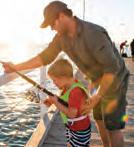
e closure was spurred by landings information, which indicates the 2023 recreational annual catch target of 1,840,000 pounds gutted weight is projected to be met on July 20.
During the recreational closure, the bag and possession limit are zero for red grouper in or from federal waters of the Gulf. e prohibition on possession of Gulf red grouper also applies in Gulf state waters for a vessel issued a valid federal charter vessel/ headboat permit for Gulf reef sh.

If red grouper recreational landings exceed the annual catch limit (ACL) in a given year, the length of that following year’s recreational shing season will be reduced to ensure the recreational ACT is not exceeded in that following year.
For more information, visit www. sheries.noaa.gov.
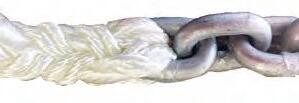
Nestled on six lush tropical acres of pristine waterfront directly on the Indian River Lagoon, take a step back in time to experience the very best of Old Florida charm with modern conveniences and services to make your stay truly memorable and unforgettable.
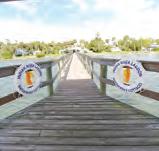


• FULLY FURNISHED 3 ROOM COTTAGES WITH FULLY EQUIPPED KITCHENS


Kingfsh Lodge includes a wide screenTV and bar for small gatherings

Sailfsh House features a wide covered wrap-around porch for larger groups
• Boat Trailer Parking on site w/ Water and Power
• 250 Foot Dock w/ Covered Area
• FREE Ice / FREE Guest Dockage
• Cable TV, Hi-Speed Internet

• 2 miles to the Ft. Pierce Inlet
• 12 miles to the Gulf Stream
• Laundry, BBQ Grilles and FREE use of our Kayaks

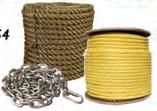


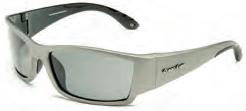
3011 N. Indian River Dr., Ft. Pierce, FL 34946 www.indianriverlagoonwaterfrontcottages.com Reservations and Information: (772) 349-2206

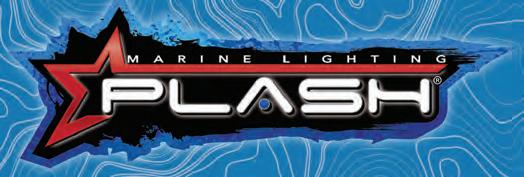
In 2018, when Hurricane Michael bowled over the Florida Panhandle, it decimated the shoal bass population in the Chipola River. e Florida Fish and Wildlife Conservation Commission estimates the population was depleted by 90 percent.


FWC is raising and stocking shoal bass to replenish stocks of this rare and native black bass. In May, 7,800 hatchery-raised shoal bass ngerlings were released into the river. is is the second consecutive year shoal bass were raised at the Blackwater Fisheries Research and Development Center near Holt, Fla. and then released into the Chipola River to enhance the wild population.
Shoal bass are one of four of Florida’s native black bass species, and this e ort marks the second time genetically pure shoal bass have been successfully raised at an FWC sh hatchery. Shoal bass are also a Florida Species of Greatest Conservation Need, which refers to native animals whose populations are of concern and are at risk or declining. e goal of raising and releasing these sh is to enhance the wild population to help maintain genetic purity and aid in the long-term conservation of this unique species of Florida black bass.
e Chipola River originates just north of Marianna, owing south for 95 miles through Jackson, Calhoun and Gulf counties where it joins the Apalachicola River. Currently, a catch-and-release-only regulation is in e ect for shoal bass on the Chipola River and its tributaries. Any shoal bass that are caught must be released alive immediately and possession is prohibited.
For more information, visit MyFWC/Freshwater.




During the 2023 Emerald Coast Open, 144 competing divers removed 24,699 invasive lion sh from the Gulf of Mexico. With support from Yamaha Rightwaters as well as many local, national and international conservation-minded organizations, the annual event set records for largest lion sh ( ve times) as well as the number of lion sh caught in both the pre-tournament and main tournament.

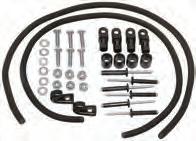

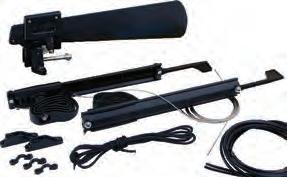

e mitigation of aquatic invasive species is one of the four pillars of the Yamaha Rightwaters mission,” said Martin Peters, Director, External A airs, Yamaha U.S. Marine Business Unit. “ e Emerald Coast Open helps foster healthy marine environments in the Gulf while educating the public about the damage a large lion sh population can cause. Yamaha Rightwaters will continue to support this tournament and applauds the e ort to help the Gulf of Mexico thrive as a strong shery.” sh prey on more than 167 di erent native sh species and can reduce some reef sh populations by up to 90 percent. ey are capable of eating sh two-thirds their size, and one lion sh can consume roughly 20 sh in a half hour.
“Since its inception in 2019, the Emerald Coast Open helped remove more than 72,000 total lion sh from Gulf waters,” said Alex Fogg, Coastal Resource Manager, Destin – Fort Walton Beach and Emerald Coast Open Organizer. “ e tournament not only yields immediate results and improvement within our sheries, it also demonstrates that catching lion sh is fun – and they are tasty! We’re glad to have the support of Yamaha Rightwaters and look forward to developing our relationship as we begin to plan for the 2024 tournament.”
To learn more about the Emerald Coast Open, visit emeraldcoastopen.com.

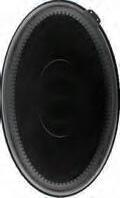
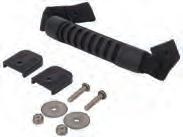
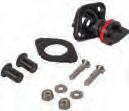
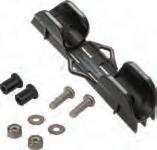
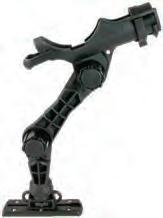







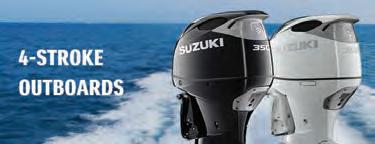
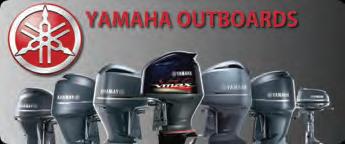







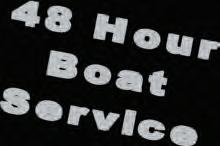


On the Gulf side, Florida anglers are looking at a pretty solid red snapper season this year, with summer dates from June 16 through July 31 and additional fall dates to pursue one of the South’s favorite game sh.

It’s a di erent story over on the East Coast. With the way the federal government has regulated snapper shing in the Atlantic over the years, anglers have come to count themselves lucky if there’s any Atlantic snapper season at all. is year’s allowance of two days—July 14-15— for recreational snapper harvest in the South Atlantic has anglers looking for ways to make the most of it.
From all reports, there are scads of red snapper out there. Catching the per-person limit of one sh should not be a problem. e key to a productive day that’s worth the gas is planning. Here are a few tips to help you make the most of the red snapper rally.

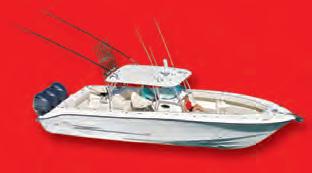
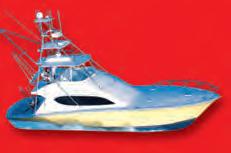

Load the Boat: With a limit of one sh per person, it’s time to load the boat with as many people as it will comfortably and safely hold so that you can ll the sh box with as many snapper as you are allowed. is is your two-day opportunity to ll the freezer with delicious sh. So, the more people you bring, the more sh you get to bring home. is is a great time to take kids. Kids love to sh, and they also take up less room in the boat.
Go With a Plan and a Backup Plan: For two days, it’ll seem like everyone with a boat is parked over every wreck and reef in the Atlantic. Get to the ramp early, and plan to be patient, because there will be a bunch of anglers with the same idea. Know where you hope to start the morning, but have several back-ups in case your honey hole doesn’t pan out. When you get there, if your graph doesn’t light up with life, don’t waste your time. Keep moving until you nd bait and sh.
Fish Big: With a one- sh limit, and no size limit, it pays to target the biggest sh down there. Fish live baits that are big enough to get past the smaller snapper down to 20-pounders. It wouldn’t hurt anyone’s feelings if a big grouper took the bait, either. is also limits the number of small sh you’ll give a case of barotrauma, which is a good thing.

Remember, use of a dehooking tool is required. ere is also a requirement for the use of non-stainless steel hooks. In waters North of 28-degrees N. latitude, the use of non-o set, non-stainless steel circle hooks is required when shing for snapper grouper species. A descending device is also required on board all vessels and must be readily available for use (attached to at least 16 ounces of weight and at least 60 feet of line).
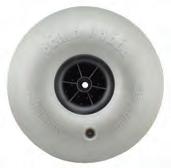
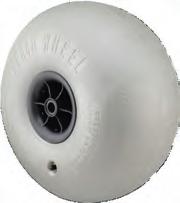
For more tips, go to coastalanglermag.com.













With excellent strength for line-to-line connections, the double uni is a go-to knot for connecting main lines to leaders. It is a quick and easy knot to tie, unlike some of the other line-to-line knots, so it’s a great option for on-thewater applications. Furthermore, it is very good for connecting di erent line types and diameters securely, which makes it the best knot for mono-to-mono or mono-to- uoro connections.

It’s also a good option to secure braid to uoro, and while it might not have the strength of the FG knot for this application, the double uni is much easier to tie and will save you some headache in real-world situations.
A disadvantage to the double uni knot is it’s a little bulky. Although it is an inline knot that keeps everything running in the right direction, the bump it creates at the connection and the two tag ends pointing in either direction can interfere with casting performance. e knot can cause some friction going through the guides. e double uni, however, is perfect for rigs where your leader will remain outside your rod tip. It’s also the right choice when casting distance and accuracy are not primary concerns. In most real-world scenarios, it will not inhibit casting ability enough that you’ll even notice.
For more tips, tricks and knots, visit usangler.com.

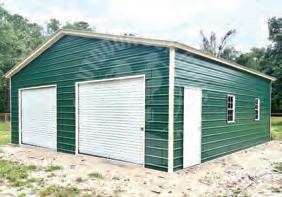


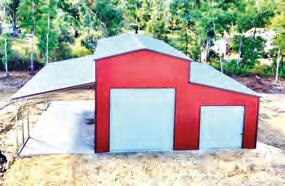
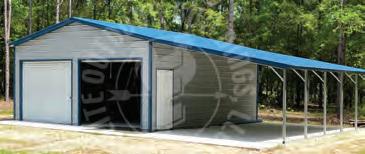








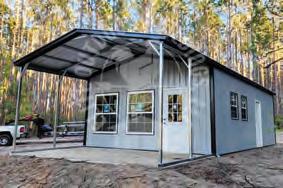















































































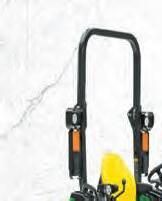









By completing conservation projects, the Chambers High School shing team recently earned a private, in-person custom rod building class with Mud Hole Custom Tackle. ey were the winning team in FWC’s School Fishing Club Conservation Project Competition and completed six projects including cleaning up and building mono lament recycling bins for their local waterbodies to win the grand prize.
All student anglers participating in the FWC’s 2022-23 School Fishing Club Program were required to complete at least one conservation project to qualify for funding associated with the program. Prizes were o ered by Mud Hole, Toad sh and Pure Fishing to encourage teams to complete multiple conservation initiatives. e competition awarded points per club participation in a variety of conservation-minded activities aimed at reducing the impacts of plastic pollution.

“Congratulations to these young anglers for their dedication to conservation,” said Tom Graef, FWC’s Freshwater Fisheries director. “ ey are making a di erence by leading the way for the next generation of anglers with these creative conservation projects.”
Punta Gorda Middle School won the second-place prize, and A. Crawford Mosley High School won the third-place prize.

“Supporting youth education is so important to our mission at Mud Hole Custom Tackle,” said Anthony Youmans, Mud Hole’s Education Program Director. “We’re honored to contribute the grand prize in this year’s competition and are always supportive of FWC’s e orts to lead conservation projects here in Florida, our home state.”
Mud Hole Custom Tackle, based in Oviedo, is the world’s largest supplier of rod building and tackle cra ing goods and instruction. From rod building












and repairing, to y tying and lure building, Mud Hole is the leading e-retailer and mail order supplier to hobbyists, small manufacturers and large OEMs, worldwide. O ering a superior shopping experience at mudhole.com, rapid ful llment, stellar customer service, and world class online content and instruction, Mud Hole Custom Tackle is the trusted source for the rod building and tackle cra ing community.
FWC’s School Fishing Club Program welcomed 38 new and 14 returning student angling clubs in Florida to the program last year, supported by the Division of Marine Fisheries Management, the Division of Freshwater Fisheries Management, and the Florida Youth Conservation Centers Network. e clubs committed to complete the provided FWC curriculum and at least one conservation project. Club mentors provided support and hands-on training in knot tying and shing gear assembly, as well as assistance with the clubs’ local events to increase student anglers’ con dence in the sport of shing. Information about the 2023-24 School Fishing Club Program will be announced later this summer.
For more information, visit MyFWC.com/SFC.
The 2023 CCA Florida STAR competition presented by Yamaha kicked o Saturday of Memorial Day weekend. Four STAR tagged red sh have already been recaptured, but what you won’t believe is that none of the anglers were CCA members and registered in the competition. ose four anglers missed out on their chance at some awesome boats and packages, and that means all the boats and packages are still available.
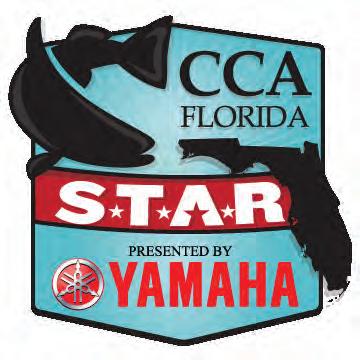
Registration for the summer-long competition is open until Sept. 4 and invites CCA members, non-members, anglers and non-anglers to take a shot at winning their share of prizes valued at more than $500,000 including boats, motors, electronics, tackle, scholarships and more. is event is about the shery winning, too. Participants become citizen biologists and citizen garbologists by submitting photos of their catch or garbage collected during the competition in the STAR app. In order to win, participants must take their entry photo on the 2023 CCA Florida STAR o cial measuring device, which can be picked up for free in any West Marine store or one of the many other STAR distribution locations throughout Florida. Find them listed on the STAR website.
“Every year we have lots of tagged red sh recaptured by unregistered anglers who are not members. We hope that this year, with more prizes, we will see more winners,” said CCA Florida STAR Director, Leiza Fitzgerald. “ e youth participation has been heartwarming, and to date STAR has awarded $800,000 in youth scholarships, plus in 2021 two youth anglers won a boat motor and trailer package that consisted of a 16-foot ski , 25hp Yamaha, Minn Kota Trolling motor and trailer. Every year there are over 100 winners In the STAR competition. Get registered and you could be one of them.”
e CCA Florida STAR competition presented by Yamaha has a division for everyone, from the non-angler to the experienced angler. It is comprised of 15 divisions targeting 12 inshore and o shore species, plus the Kick Plastic Trash Division presented by Papa’s Pilar which encourages cleanup of trash from Florida’s coastal waters. STAR’s signature Tagged Red sh Division o ers seven winners, ve adults and two youth, the choice of a Contender Boats 22 Sport, Path nder Boats 2200 TRS and a Carolina Ski 162 JLS. STAR has additional new Tagged Red sh sponsors with Dek Kat Boats o ering a 27 Flatz Kat and Sea Doo and Can-am o ering a fun package of a Trophy Fishing Sea Doo and the Can-am Defender. Each boat will be powered by a Yamaha, the competitions presenting sponsor. Be the rst winning tagged red sh angler for your choice of all these packages as your prize.
Once again in 2023, we have the ALTA SUPER STAR tagged red sh swimming in Florida waters. If it is recaptured, the winner will receive $50,000 cash! For the rst two youth anglers who win in this division, prizes include a tiller boat powered with Yamaha outboard, trailer, Minn Kota trolling motor and Humminbird electronics.
Each of Florida’s coastal counties have on average four tagged red sh for a total of over 160 prize-winning sh. e best opportunity to catch one of this year’s tagged red sh will be in Citrus and Charlotte Counties, STAR’s 2023 Destination Counties, which each have eight tagged red sh in their coastal waters.
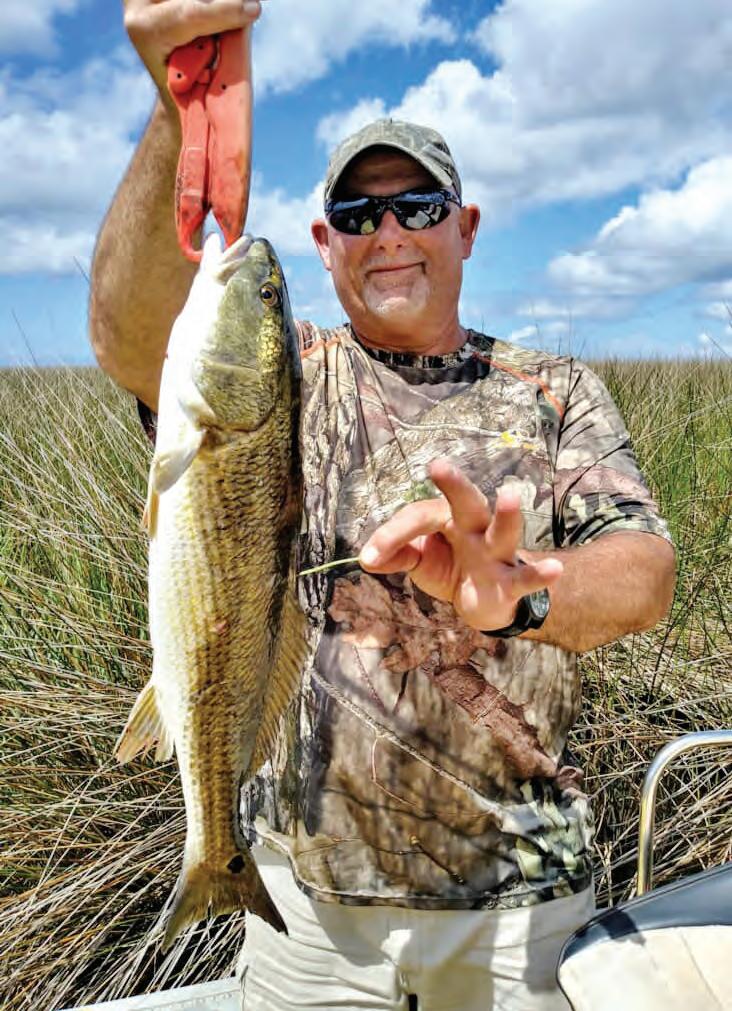
For the o shore anglers, the Tigress Outriggers and Gear Tagged Dolphin Division o ers one winner a $10,000 cash prize. e rst STAR registrant and CCA Florida member who catches a tagged dolphin will win. Twenty tagged dolphin (Mahi Mahi) were released for STAR in the lower Florida Keys.
STAR is a family-friendly competition, and CCA Florida youth members (ages 6 to 17) can participate for free. Kids are encouraged to submit entries in the Youth Scholarship Division presented by Realtree Fishing for an opportunity to win one of 12 scholarships totaling $100,000. Other divisions include the Power Pole Conservation Division, Bona de Kayak Division and Ladies Division as well as the Yamaha Guides which allows guides to participate when they are not on a charter for hire. Since most division winners are determined by a random drawing, it is not about catching the biggest sh, any size sh can win. Remember, it is very simple really, every sh you catch between now and Monday, Labor Day o ers the CCA member who is registered in STAR the opportunity to win their share of $500,000 in prizes and scholarships. You can’t win If you are not registered.
STAR is also a tool to gather catch data, it creates awareness for conservation, our sponsors and CCA Florida. Launched in 2015, the competition has set the bar for other shing tournaments to follow by implementing conservation-friendly alternatives such a catch-photorelease format and a trash division. Florida STAR focuses on conservation with its technology-based, CPR format and dedicated smartphone app which promotes the proper handling of species and allows participants who are members of CCA and registered in the competition to upload photos of their catch or trash buckets in the STAR competition and be rewarded for their e orts. CCA Florida also provides access to the data collected to other conservation organizations and universities to help educate the public and for use in their studies on conservation, habitat and stock assessments.
You can still register for STAR 2023. You have all summer and all the boats and packages are still available. To receive additional information on divisions, prizes and more, visit cca star.com or Facebook.
Put Orange Lake on your bass- shing itinerary for next spring. is 12,550-acre lake in Alachua County southeast of Gainesville is a springtime conveyor belt of big bass.
From February through April this year, 19 Orange Lake largemouths heavier than 10 pounds were reported to TrophyCatch, FWC’s big-bass recognition program.
Bass heavier than 13-pounds are given “Hall of Fame” status by TrophyCatch. Five 13-pluspounders have been caught statewide this year. Four of them came from Orange Lake, and three of those were caught in February.

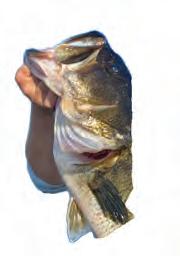
e most recent one we’ve heard of was a sh caught back on Feb. 7 that just popped up on the TrophyCatch Facebook
Kelly


a giant 13-pound, 3-ounce monster swimming a
Man… that sounds like a lot of fun.
For more information, visit www.trophycatch orida.com.
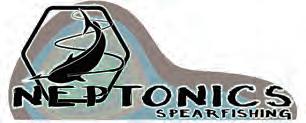















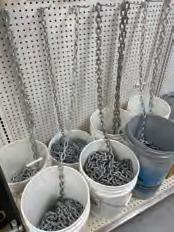

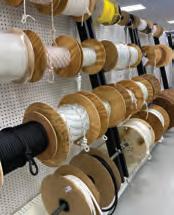
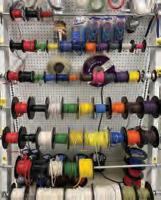


The surf can be bountiful and as easy as shing can be when the seas are calm. On a recent trip to the Gulf of Mexico’s calm shores, I was certain I was going to catch them at will. To the naked eye, conditions were as good as it gets, but many fellow anglers fell short of their dreams on this beautiful day. Here are some modi cations I made on the y that allowed me to come out ahead of most others.
is day provided us with glass-calm seas, clear water and bait everywhere, but one key ingredient was missing, substantial tide. What most of us focused on, including myself, were the calm conditions. is is always the draw for trout shing on the beachfront in Texas, and it is seldom the norm.



I did research the tide, and it was an early high

heading out, which, once again, seems perfect. However, the slope on the graph was a slow outgoing tide, not one that was going to trigger many bites on its own. Once I realized this and watched others leave empty handed, I decided to search for places that would encourage the slow outgoing current to increase in velocity. I sought out guts in the bars perpendicular to the shore. ese same guts have the potential to cause dangerous riptides, and they can also be the best place to sh. You typically see these guts by studying the waves, but with no waves I had to use my polarized glasses. ankfully, the water clarity made this an easy task. I drove along the beach looking for these, and once I spotted them, I stood on the back of my truck to increase my elevation to identify the best ones.
I’d found my pattern. Now the catching could begin! Keep in mind, as slow as the tide was moving, it did not create a dangerous situation


(always be cautious of rip tides on the beach), but it did speed up the current enough to trigger a good bite. I thoroughly worked all edges of these guts, nding most bites on the back side where the tide pulled bait from the shallow gut to the deeper second gut.

When the tide is slow, I like to try and get a reaction strike by throwing something a little di erent or working my lure erratically. On this day, I was throwing a rattling so -plastic paddletail. I also picked one with a bright green tail to stand out from the millions of bait sh traveling the rst and second guts. All of these tactics combined allowed me to salvage a day when most le with empty stringers.
e beachfront can be a great place to sh, and it’s fun for the kids. My boys enjoy wading beside me, and when the shing is over it’s time to play at the beach!






Alaska shing season started o with a bang for anglers visiting Ketchikan, Alaska. Halibut shing charters produced great catches of halibut, paci c cod, lingcod and rock sh. Salmon shing trips resulted in big king salmon while we awaited the arrival of silver salmon and pink salmon.

Early season typically is more inconsistent than the deep summer months of July, August and September. With that being said, our guests enjoyed better than average shing to start o the 2023 Alaska shing summer.








Fishing tours for cruise ship guests and y-in anglers spent the majority of May bottom shing. ese sheries consist of shing near and o shore waters for halibut, cod and rock sh. Deep-water jigging for halibut had guests reeling in keeper-sized halibut as well as oversized halibut ranging from 10 pounds to 120 pounds. ere’s nothing quite like the thrill of hooking into these deep sea dwellers, and the delicious white meat holds up well when frozen and shipped back home to the lower 48.
Halibut weren’t the only species caught during our halibut shing charters. Paci c cod were a staple while bottom shing for halibut. Cod were concentrated in large numbers on the sandy ats eating a variety of bottom rigs. Traditional halibut shing rigs with glow-in-the-dark squid and cut herring caught the majority of Paci c cod. We also found great success jigging for cod with metal jigs and so plastic swimbaits.
Following up halibut shing with rock sh and lingcod jigging made for a combination catch that had everyone smiling. We do this in shallower water with light tackle. While catching pelagic rock sh such as yellowtails and duskies, we also caught big lingcod. With such a phenomenal bottom shing area, you’re never quite sure what will grab the end of the line. Giant lingcod make a trophy catch for anyone visiting Alaskan waters.
King salmon shing opened June 1. Everyone rejoiced at the opportunity to pursue this iconic sh. Big king salmon catches came in throughout the entire southeast Alaska region. Ketchikan is known as the salmon capital of the world, and it didn’t disappoint. Herring Cove and Mountain Point were the rst areas to open up. is resulted in large numbers of anglers trolling for prized king salmon. As we look forward for the entirety of the region to open, these were the rst areas where big catches came in.
Over the next couple months, the shing will continue to heat up! Halibut will continue to show up in larger numbers as the water temperatures increase. In addition, the salmon shing will see a big burst of silver salmon and pink salmon to combine with the larger king salmon. It’s all happening now!
For more information, visit www.ketchikan shingtrips.com or call (907) 617-4717.
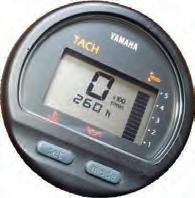
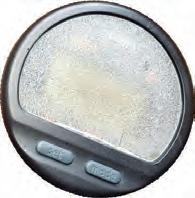
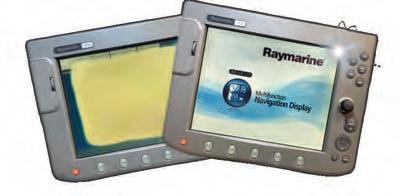



Most of the time the saying is true, bigger baits equal bigger sh! Although elephants eat peanuts, a big bait pro le is something big sh sometimes can’t resist whether you’re shing the open ocean or the Great Lakes. I’ve spent a lot of time in the last couple years experimenting with lures that are larger than what my previous comfort zone was for bass. It is pretty special to see what gets curious to come look at or bite these big baits.
ere are many di erent types of swimbaits on the market, but I’ll break them down into two styles to keep it simple. ere are hard, gliding-style swimbaits with treble hooks and there are so -body swimbaits. Each has a time and a place, and both attract some very big sh.
Depending on where you are in the country and the size of the forage in your lake, a normal meal for a bass is usually much bigger than you would think. Bass have huge mouths to accommodate large prey items. A two- or three-pounder has no problem at all swallowing a 6- to 8-inch bluegill whole. I’ve seen 10-plus-pounders eat gizzard shad up to 14 inches long! Trying to exactly duplicate the larger bait sh in your lake with a natural presentation is the key to drawing attention to your arti cial lure.
With hard swimbaits, my rst choice is a shad imitation. Most of the places I sh are full
of shad, and shad seem to be a favorite food source for bass.


Crappie are another forage species people sometimes forget about. Lately, when throwing big baits
over deeper water, I’ve caught some big sh with crappie down in their throats.
With so swimbaits, I usually go to a bluegill imitation. I like so baits because they are more weedless, and you can creep them through the grass or along the bottom in places where bluegills live.
Big swimbaits can get mighty expensive. If you are just getting started with them, I would suggest sticking with the more a ordable baits that get good reviews until you get your con dence up. en you can dive into some of the larger, more customized lures.
Learning to sh big baits is best done by getting on the water and doing it. Just get out there and experiment with retrieves until you nd out what works. Of course, throwing giant lures requires special equipment. I like 13 Fishing’s a ordable Defy for a rod. It’s an 8-foot swimbait rod that handles most big lures with ease. I pair this with a 300 sized reel, like the 13 Fishing Concept A3 and some 20- to 25-pound Seaguar Abrazx.
I hope this article sparks someone’s interest to get out there and throw a big bait. Once I stepped out of my comfort zone, I discovered it to be one of the coolest and most fun ways to target big bass all year long. Don’t hesitate to reach out to me on social media if you have questions about these tactics or any others.
Tyler Woolcott is a professional tournament angler and guide. Check out his website at www.tylerwoolcott shing.com.

really realized that I hooked a monster. Adrenaline started pumping hard and the fear of losing it almost sent me into a panic. I was alone, facing the biggest cat sh I ever seen in 23 years.
Italy’s River Po has done it again.
Last week, MADCAT pro sta er Alessandro Biancardi caught a 9-foot-long wels cat sh that will likely replace the IGFA world length record for the species. e monster wels measured 285 centimeters (9 feet, 4.2 inches) in length and stands to beat out the existing record by just 4 centimeters, or about an inch and a half.

Biancardi is a veteran cat sh angler who has targeted wels for more than two decades. He landed his potential new record a er a more than 40-minute battle while shing solo in an aluminum


jonboat.
e giant sh ate a so -plastic paddletail shed on a jighead.
“In silence, I approached the rst spot and a er few casts a powerful bite arrived. e sh stood still some seconds before starting a very complicated ght, between strong currents and a lot of submerged obstacles,” Biancardi wrote in a blog post. “I calmly managed to ght what I felt to be a prehistoric sh. I followed it for 40 endless minutes. When it surfaced for the rst time, I
“I tried gloving its mouth two or three times, but it was still too strong,” he wrote. “I decided to go in shallow water trying to land it from shore, and a er few tries, I managed to land it! I tied the sh to let him recover from the long ght then I suddenly realized that the boat was not anchored, and it was going away in the current. I was forced to have a swim to recover it with all my stu .”
Biancardi then called some friends from a nearby sh camp to come help him get a good measurement on the beast. A er taking measurements, the sh was released. Without a weight, it will not be considered for the all-tackle world record, which stands at 297 pounds, 9 ounces for a sh caught from the Po back in 2010.
For more, go to https://madcat- shing.com.


Coastal Angler and The Angler Magazine, Suzuki Marine and Sea Eagle have come together to offer readers a shot at this Sea Eagle FishSkiff 16 paired with a Suzuki DF4 outboard that’ll take you wherever the fish are. The FishSkiff 16 is an inflatable fishing boat that is lightweight, sturdy, stable and extremely packable. It rolls up small enough to fit in the trunk of a car and quickly inflates into a fishing machine. Powered by Suzuki’s four-stroke DF4A, you’ll have to hold on to your hat as you scream over the flats. Designed for efficiency and performance and portability, the DF4A provides all the speed and acceleration you can handle. It’s lightweight and can be attached or removed with ease.

Ifyou’re anything like my dad, you give your family everything. Your name, your time, your values — the people in your life know they can depend on you for practically anything. In exchange for imparting all of this energy and experience, you expect nothing in return.
e point? You deserve to treat yourself once in a while. You do so much for the people you care about. Now it’s time to focus on you for just a few minutes. at’s where the Men’s Due Volta Watch comes in. is astonishing innovation provides a digital readout that’s powered by a precise quartz engine, combining both analog and digital timekeeping.
Out tted with a stopwatch, alarm, a.m./p.m. settings, and day, date and month complications, this timepiece stands out from the crowd. With its large face and handsome, masculine design, this watch is perfect for the back nine and the happy hour afterwards. Water-resistant up to 3 ATM, this timepiece won’t wimp out if you have a run-in with a water hazard.
Other hybrid watches can sell for thousands of dollars, but because we’ve built more than 1 million watches, we know how to create real value. at’s why we can o er this timepiece for just $59! If you’re not completely satis ed with this watch, return it for a full refund.

Act quickly! is one-of-a-kind watch has been one of our fastest sellers this year. Of our original run of 2,872, we only have 389 left for this ad! In the last couple of years there’s been a watch shortage, but Stauer has got you covered. If you’re the kind of man who gives everything and expects nothing in return, it’s time to treat yourself.

Watch Speci cations:










•Complications: stopwatch, alarm, a.m./p.m. settings, and day, date and month



•Precision movement chronograph

•Stainless steel caseback and crown

•Water-resistant to 3 ATM
Men’s Due Volta Watch $399 $59* + S&P Save $320








 By Gary Turner
By Gary Turner
The sun was just cresting the mountains and the moon was low in the west as Capt. Ron Ratlief, of Ron’s Fishing Guide Service, and I began shing for redear sun sh on Arizona’s Lake Havasu. is trip has been on my bucket list for years. I just never made the time, which is ridiculous considering Havasu is pretty much the Holy Land for bream shing.
Havasu is a large Colorado River reservoir on the Arizona/Colorado border. In recent years, the lake has produced a series of world-record redear sun sh, with the current mark standing at 6-pounds, 4-ounces. Havasu’s freakishly large redears are due to a plentiful food source of invasive mussels that have in ltrated the system. e lake also holds some enormous bluegills, which I came to nd out over two days shing with Ron and a third day with my buddy Zac Mickle.
You could feel it was going to be a hot one—over 100 degrees— as the cool morning air evaporated with the sun. A er all, Havasu is an oasis in the middle of a desert. We started the morning sight shing coves. Havasu’s water is as clear as the Keys, and I half expected to see bone sh swimming by. We searched several coves and saw lots of sh, including bluegills, carp, cat sh, giant gizzard shad, tilapia, green sun sh and small stripers, just
to name a few. We also found some redear sun our target species, but they were small, a pound or less, and we were looking for big ones!
We moved to plan B and headed to deeper water. Havasu has the most man-made attractors and brushpiles I’ve ever seen. might be a bunch in South Carolina’s Santee, but you would never see them. e crystal-clear water makes everything visible, and as the sun got higher, we could see even more. We saw structure clearly in 18 feet of water with large redears on it. I dropped a night crawler on a jig head down, and BAM! I had a good bite! We landed a nice redear heavier than two pounds and continued hitting deeper brush, where we saw some big ones and caught a thick 14-incher that was pushing 3 pounds. A er several other sh in the 1 to 1 ½-pound range, Ron suggested we move back to a cove for a few last casts before heading in.
In the cove, I got hammered by a good one, which upon landing was about the same size as the 2-pounder from earlier, but it looked more like a bluegill. I was thinking it might be a hybrid between the two species, which was later con rmed.

If you like bream, you need to check out Havasu. It is a beautiful lake in the desert with some giant redears and bluegills. I might not have


caught a world record this year, but I’ve already booked next year’s trip.

Check out Gary Turner’s shing adventures on his YouTube channel at youtube.com/ @FishingWithGary.
















Travel the globe, without leaving home—with this set of the world’s ve most popular pure silver coins. Newly struck for 2023 in one ounce of ne silver, each coin will arrive in Brilliant Uncirculated (BU) condition. Your excursion includes stops in the United States, Canada, South Africa, China and Great Britain.
Each of these coins is recognized for its breathtaking beauty, and for its stability even in unstable times, since each coin is backed by its government for weight, purity and legal-tender value.

2023 American Silver Eagle: The Silver Eagle is the most popular coin in the world, with its iconic Adolph Weinman Walking Liberty obverse backed by Emily Damstra’s Eagle Landing reverse. Struck in 99.9% fine silver at the U.S. Mint.



2023 Canada Maple Leaf: A highly sought-after bullion coin since 1988, this 2023 issue includes the FIRST and likely only use of a transitional portrait, of the late Queen Elizabeth II. These are also expected to be the LAST Maple Leafs to bear Her Majesty’s effigy. Struck in high-purity
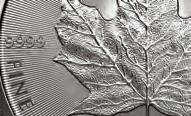


99.99% fine silver at the Royal Canadian Mint.
2023 South African Krugerrand: The Krugerrand continues to be the best-known, most respected numismatic coin brand in the world. 2023 is the Silver Krugerrand’s 6th year of issue. Struck in 99.9% fine silver at the South African Mint.



2023 China Silver Panda: 2023 is the 40th anniversary of the first silver Panda coin, issued in 1983. China Pandas are noted for their heart-warming one-year-only designs. Struck in 99.9% fine silver at the China Mint.


2023 British Silver Britannia: One of the Royal Mint’s flagship coins, this 2023 issue is the FIRST in the Silver Britannia series to carry the portrait of King Charles III, following the passing of Queen Elizabeth II. Struck in 99.9% fine silver.





These coins, with stunningly gorgeous finishes and detailed designs that speak to their country of origin, are sure to hold a treasured place in your collection. Plus, they provide you with a unique way to stock up on precious silver. Here’s a legacy you and your family will cherish. Act now!
You’ll save both time and money on this world coin set with FREE shipping and a BONUS presentation case, plus a new and informative Silver Passport!
2023 World Silver 5-Coin Set Regular Price $229 – $199 SAVE $30.00 (over 13%) + FREE SHIPPING




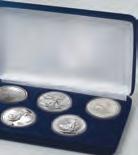

FREE SHIPPING: Standard domestic shipping. Not valid on previous purchases. For fastest service call today toll-free


1-888-201-7070



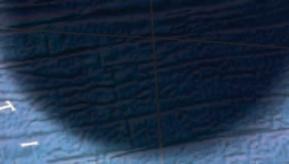





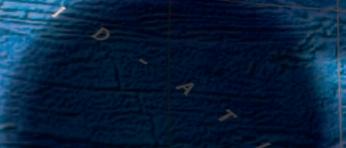












Offer Code WRD333-05









Please mention this code when you call.







 By Capt. Judy Helmey
By Capt. Judy Helmey
Check out the crazy markings on this Pennsylvania bass!
Recently the American Fisheries Society Black Bass Conservation Committee (BBCC) posted photos of this striking, black-splotched largemouth bass on its Facebook page.

During the old days of chumming, lots of shermen used glitter in their chum, but we sure didn’t talk about it. Why? It was a serious sh-catching secret, and it works as well now as it ever did.
Of course, back then we hadn’t heard of microplastics. We didn’t equate those tiny ashy akes with pollution. Traditional glitter is made with aluminum and plastic, which is a really bad thing to be throwing in the water. ankfully, today there is biodegradable glitter made of plant cellulose. is more environmentally friendly product enables us to keep using our old tricks without doing harm to the ocean.
When you add biodegradable glitter to your chum, the oils coat
every single small piece of glitter. When it hits the water, each piece of glitter becomes sh attractant. As it slowly spreads through the water column, it catches sunlight and re ects it. e oil onboard each small piece of glitter leaves a trail that only a hungry smart sh would care to follow.
You might ask how do I know that glittering chum works? Well, when you start getting hits and landing sh, open the sh box and take a look. You know how glitter is. It gets everywhere and sticks to everything. Well, your sh box and the sh in it will be coated in glitter. Trust me.

Capt. Judy Helmey runs Miss Judy Charters o the Georgia coast. Check them out at missjudycharters.com.

e photos, by professional bass sherman Grae Buck, show his wife Jessica Buck holding a sh with melanosis. e post goes on to explain that this condition is when something a ects the pigment expression in the skin, turning it black. Termed blotchy bass syndrome, it has been found in black bass species in waterbodies across the United States with increasing frequency.
“While a truly melanistic sh would be all black, we more commonly see parts of the sh black, irregular blotches, spots, or ns,” the post reads. ese crazy colored sh show up from time to time, and previously it has been explained as a genetic mutation. In its explanation of this sh, however, BBCC pointed to research being conducted at the U.S.G.S. Eastern Ecological Science Center in West Virginia.
e research found that this blotchy skin condition is actually caused by a viral infection, an emerging novel adomavirus. Researchers have not pinned down a cause yet, but a U.S.G.S. report suggests higher incidences of blotchy bass syndrome in disturbed-water systems, with a potential link to chemicals. ere is currently broad ongoing research to try and determine the causes and e ects of this infection.


Follow the BBCC at www.facebook.com/AFS.Black.Bass.


Home of world class fishing on the beautiful Watauga Lake, rugged Doe River and designated trophy trout stream, Watauga River
